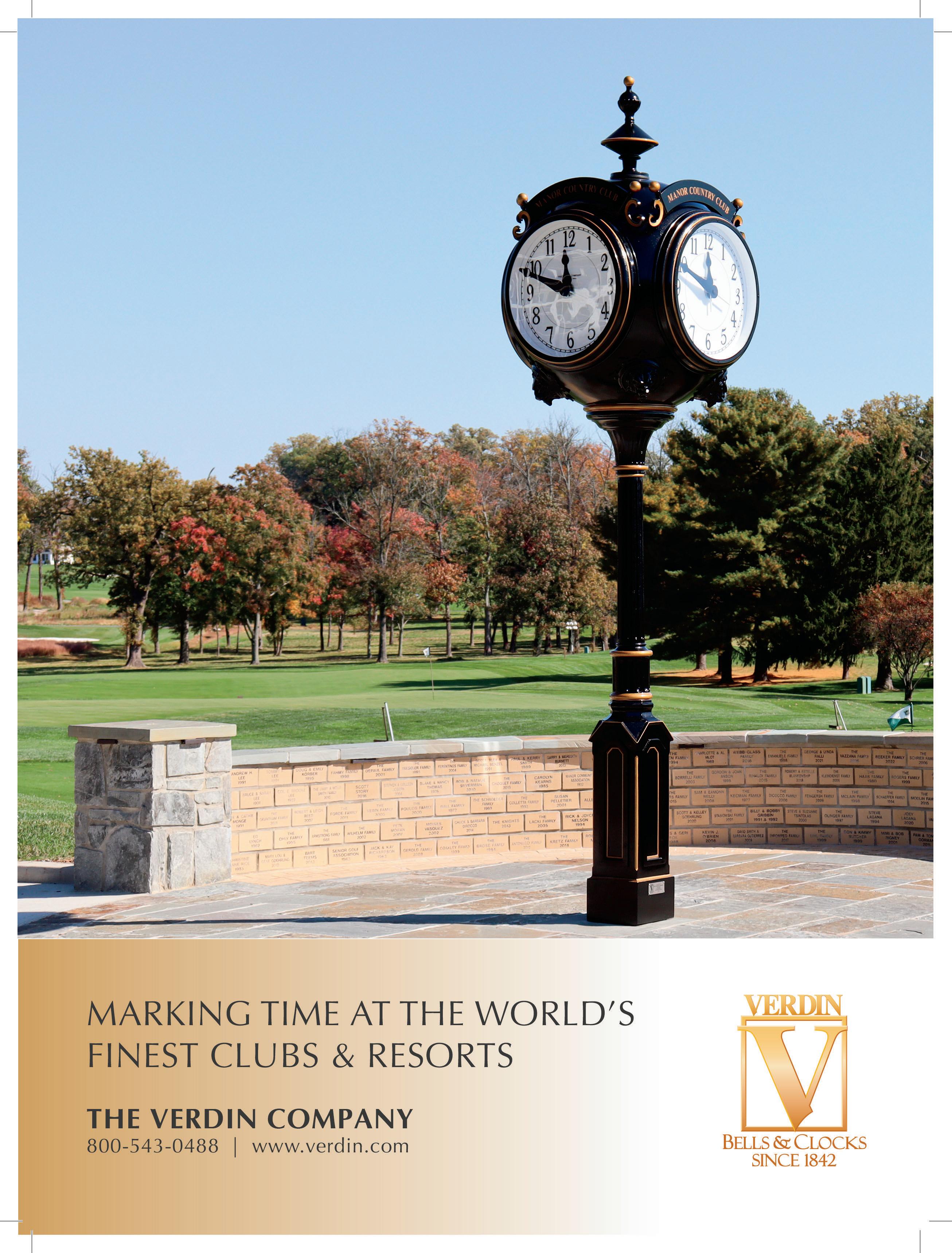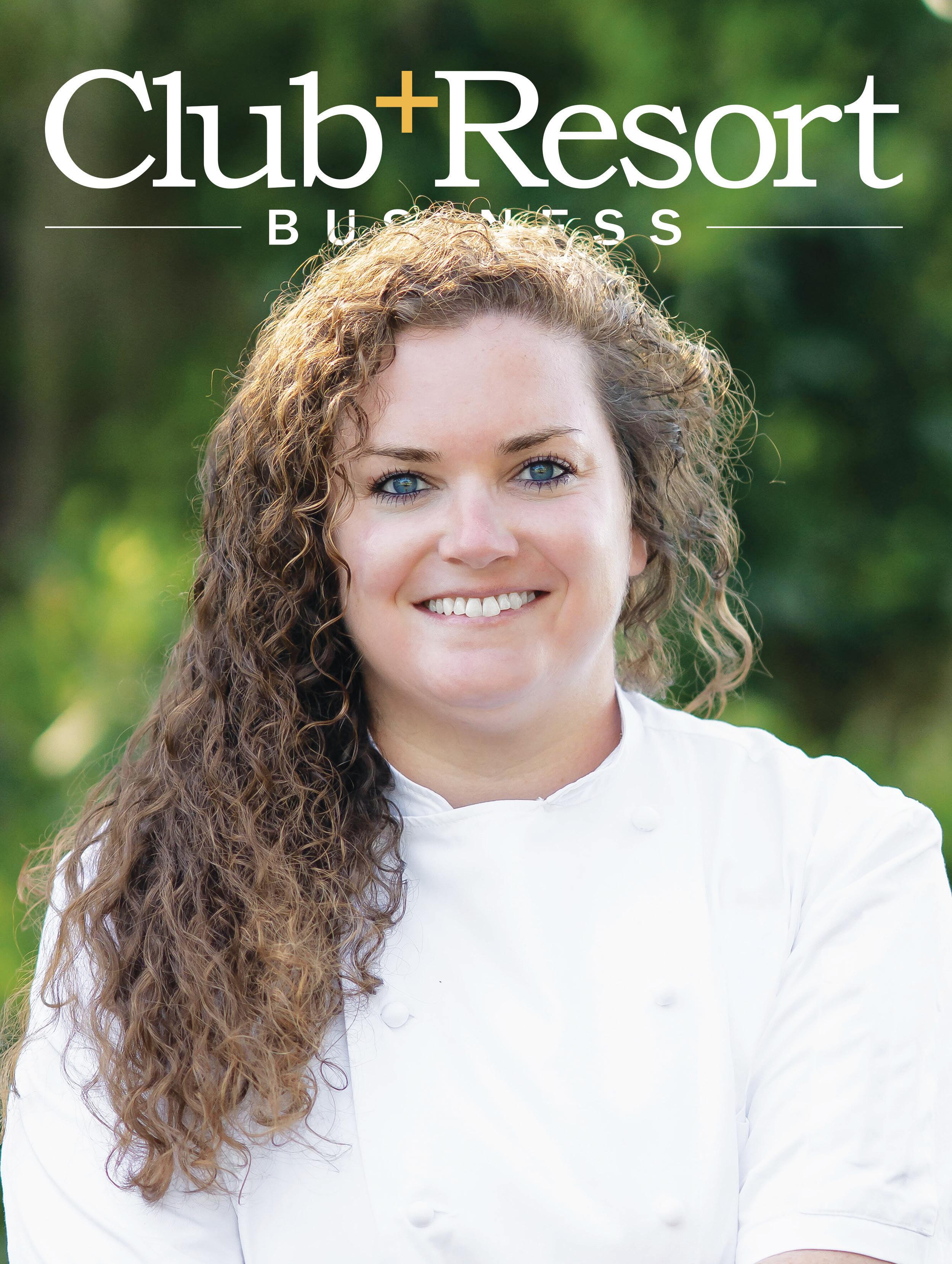

CONSISTENCY AS A CRAFT
Executive Chef Beth Cosgrove shows how steady standards and smart collaboration keep thousands of members engaged at Palmetto Bluff Club without losing the details that matter.



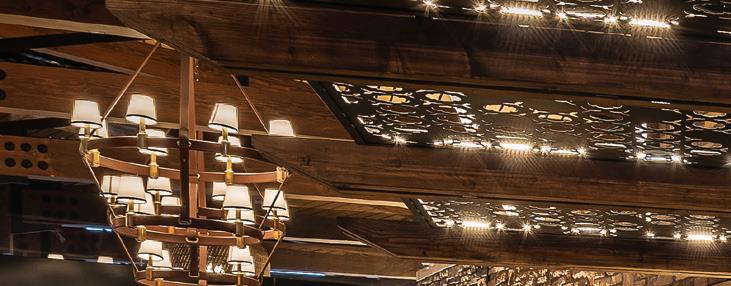

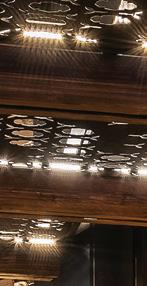
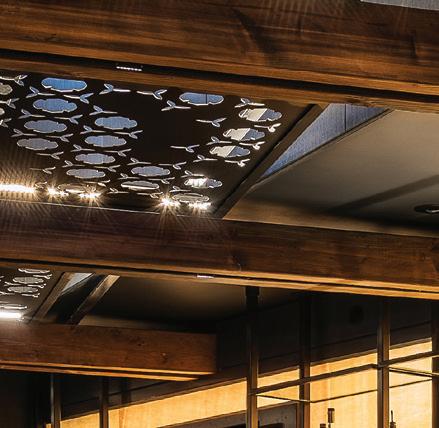
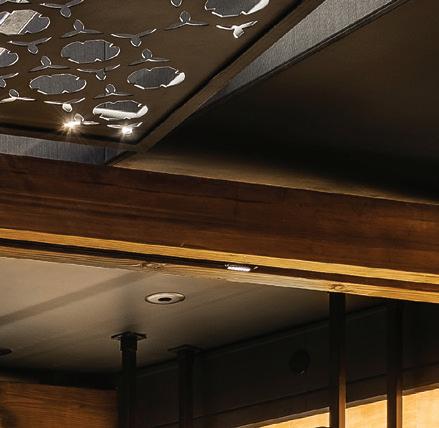
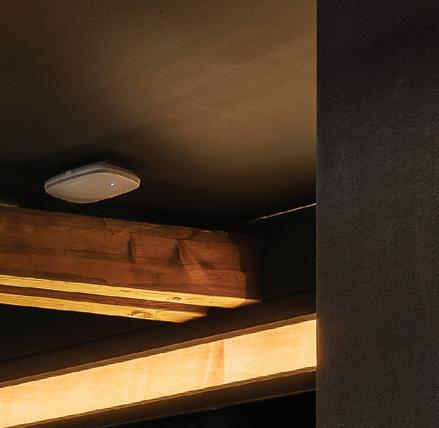


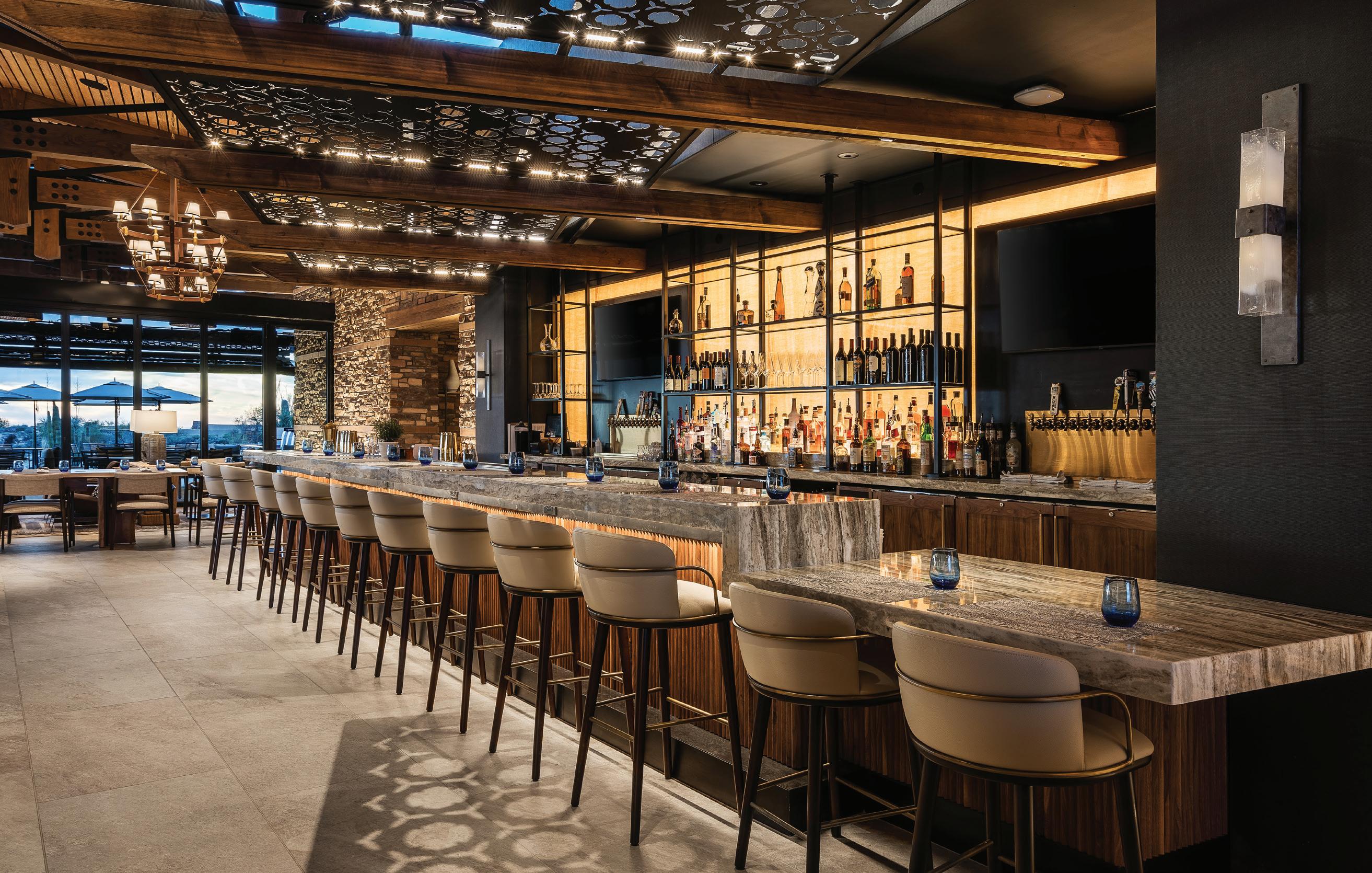







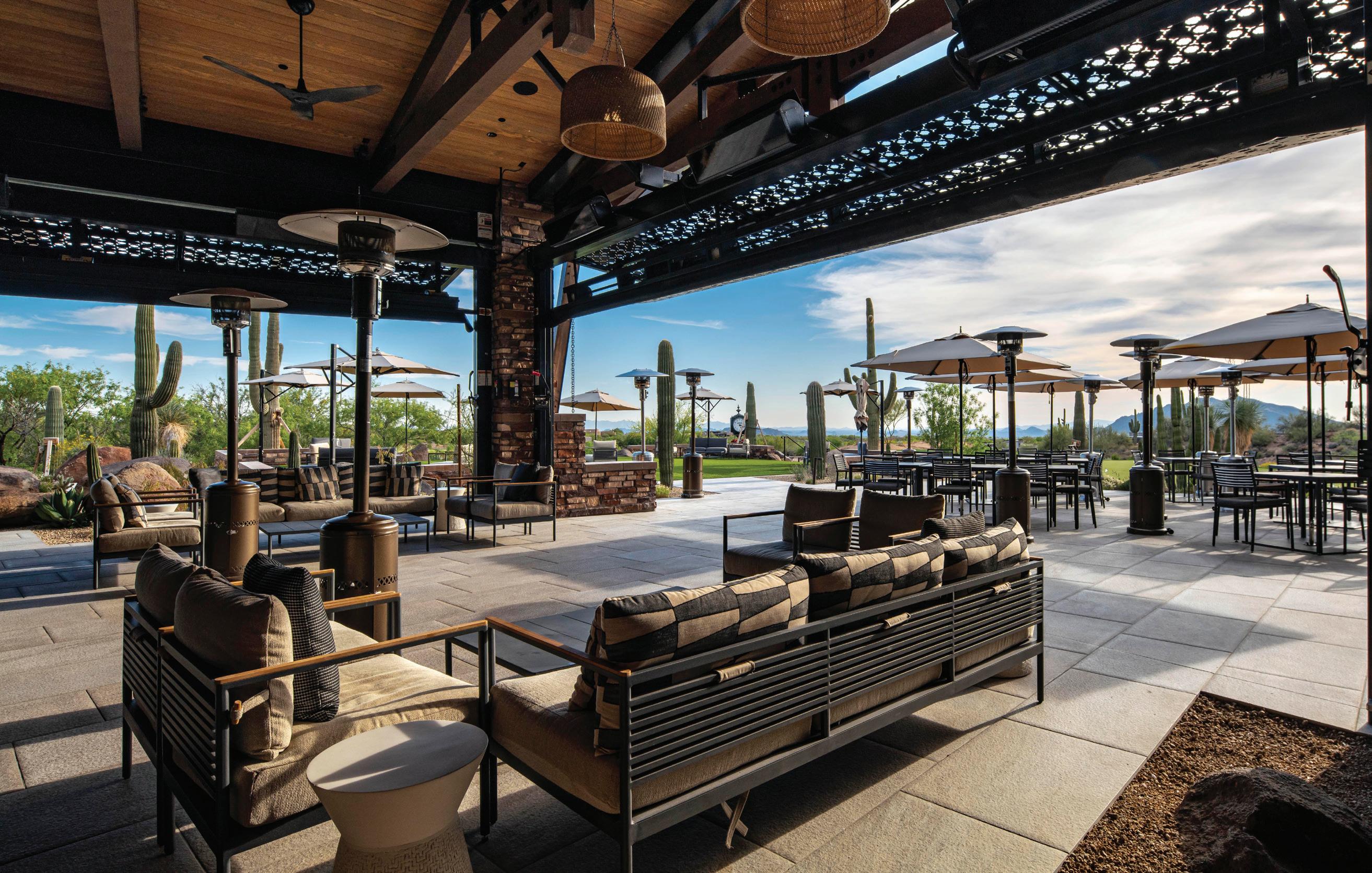

Photography by Robb Williamson
UNLOCK CONVENIENCE

Give your members the ability to unlock club doors with their phone through the ForeTees App
Unlock doors with a tap of the phone
Gain insights from detailed access reporting
Control access of each location
Eliminate the need to manage keycards
“Our members were already comfortable with the ForeTees interface, so rolling out gym access through the ForeTees App was seamless. It reassured everyone we were keeping off-site facilities exclusive to current members. The usage reports we receive are invaluable for planning and staffing decisions. Looking ahead, we plan to expand this solution to our off-site racquet courts and new fitness facilities throughout the community.”

Mark Grisham General Manager Black Creek Club
CARRYING THE ROUND A LITTLE FURTHER
WE’VE BEEN RETHINKING OUR NEWSLETTERS. Not in a superficial way, but in the way you might rethink a clubhouse space or a menu that has served its purpose but could do more. For a long time, newsletters were our way of sending you stories and headlines. Useful, sure. But the club world isn’t about useful alone. It’s about creating reasons for people to engage.
That’s the shift we’ve been making. We’re shaping these newsletters to feel closer to what you do every day with your own members. They should spark curiosity. They should feel personal. They should give you something worth carrying into a staff meeting or a pre-shift huddle. They should connect you to the work of your peers in a way that feels immediate and real.
That said, nothing replaces the power of being in the same room together. Our events remain the heartbeat of peer-to-peer connection. That is where ideas leap off the stage, where hallway conversations linger, where the spark happens. But a conference lasts a few days. A newsletter can nurture a community week after week.
One of the biggest changes is an increase editorial voice. We’re asking more questions. We’re writing more stories that get behind the “what” and into the “why.” We want
WTWH MEDIA, LLC
1111 Superior Ave., Suite 1120 • Cleveland, OH 44114

these newsletter exclusive articles to be less about broadcasting and more about inviting you in. When you read how another GM is rethinking staff development or how a chef is tackling labor, it gives you a window into their approach and a chance to consider how it might apply in your own club.
And here’s the best part: You get to pull up a chair, too. If you’ve figured out a clever solution, or if you’ve learned a hard lesson worth sharing, I want to help you share your story.
So, yes, the newsletters have changed. They’re re-imagined as part of the same ecosystem that makes this entire brand matter. A bigger table. A fuller room. A fresh chance for the best ideas in this business to find their way from one club to the next.

EDITORIAL DIRECTOR
Joanna DeChellis jdechellis@wtwhmedia.com

Scan this QR code to sign up for our newsletter and join the conversation.





Ph: 888.543.2447 www.clubandresortbusiness.com • www.clubandresortchef.com
SUBSCRIPTION INQUIRIES
To enter, change or cancel a subscription: Web (fastest service): https://clubandresortbusiness.com
Phone: 888-543-2447 (U.S. only, toll-free)
Mail: Club & Resort B≠≠usiness
1111 Superior Ave., Suite 1120 Cleveland, Ohio 44114
Copyright 2025, WTWH Media, LLC







Subscriptions: Qualified U.S. subscribers receive Club + Resort Business at no charge. For all others the cost is $75 U.S. and possessions, $90 Canada, and $145 all other countries. Per copy price is $3. Club + Resort Business does not endorse any products, programs or services of advertisers or editorial contributors.
Copyright© 2025 by WTWH Media, LLC. No part of this publication may be reproduced in any form or by any means, electronic or mechanical, or by recording, or by any information storage or retrieval system, without written permission from the publisher.
Club + Resort Business (ISSN 1556-13X), USPS Publication #23658 is published 10 times: (January, February, March, April, May, June, July, August, October, December) by WTWH Media, LLC, 1111 Superior Avenue, Suite 1120, Cleveland, OH 44114 Copyright© 2025.
Periodicals postage paid at Cleveland, Ohio, and additional mailing offices. Postmaster: Send change of address notices to Club + Resort Business, 1111 Superior Ave., Suite 1120, Cleveland, Ohio 44114.
Editorial
EDITORIAL DIRECTOR Joanna DeChellis jdechellis@wtwhmedia.com • 412-260-9233
SENIOR EDITOR Isabelle Gustafson igustafson@wtwhmedia.com • 216-296-2041
VP, EDITORIAL Danny Klein dklein@wtwhmedia.com • 919-945-0726
Content Studio
VP, CONTENT STUDIO Peggy Carouthers pcarouthers@wtwhmedia.com
WRITER, CONTENT STUDIO Ya'el McLoud ymcloud@wtwhmedia.com
WRITER, CONTENT STUDIO Drew Filipski dfilipski@wtwhmedia.com
Art + Production
SENIOR ART DIRECTOR Matthew Claney mclaney@wtwhmedia.com
CREATIVE DIRECTOR Erin Canetta ecanetta@wtwhmedia.com
Sales + Business Development
SVP SALES & STRATEGY Matt Waddell mwaddell@wtwhmedia.com • 312-961-6840
NATIONAL SALES MANAGER Amber Dobsovic adobsovic@wtwhmedia.com
BRAND LEADER Patrick McIntyre pmcintyre@wtwhmedia.com • 216-372-8112
SALES DIRECTOR Mike Peck mpeck@wtwhmedia.com • 773-859-1107
KEY ACCOUNT MANAGER John Petersen jpetersen@wtwhmedia.com • 216-346-8790
CUSTOMER SERVICE REPRESENTATIVE Annie Paoletta apaoletta@wtwhmedia.com
Leadership CEO Matt Logan mlogan@wtwhmedia.com
CHIEF OPERATING OFFICER George Yedinak gyedinak@wtwhmedia.com
CHIEF REVENUE OFFICER Scott Kelliher skelliher@wtwhmedia.com
VP OF OPERATIONS Virginia Goulding vgoulding@wtwhmedia.com
SENIOR VP, AUDIENCE GROWTH Greg Sanders gsanders@wtwhmedia.com
www.clubandresortbusiness.com I www.clubandresortchef.com


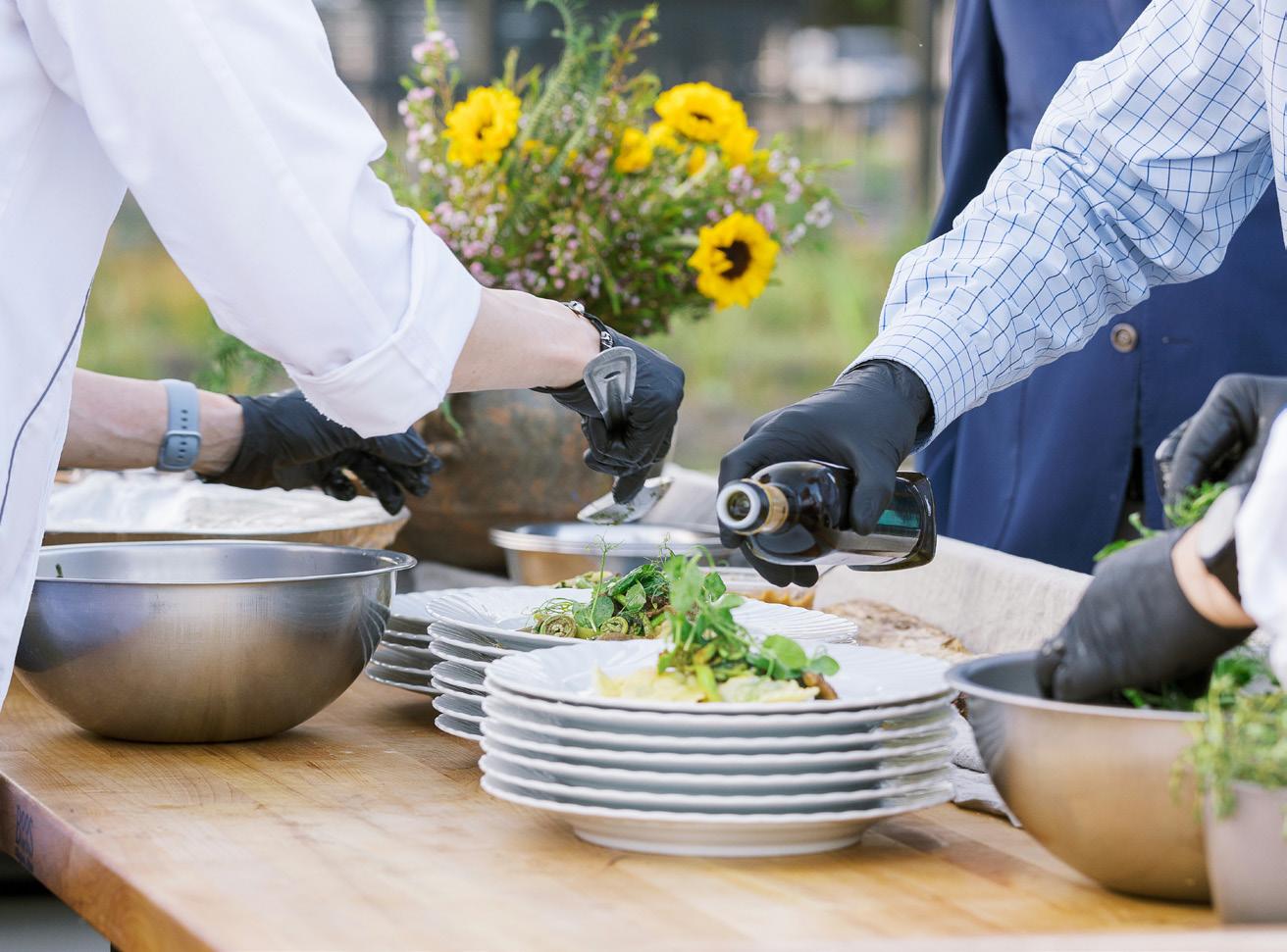
CONSISTENCY AS A CRAFT
Executive Chef Beth Cosgrove shows how steady standards and smart collaboration keep thousands of members engaged at Palmetto Bluff without losing the details that matter.
(Cover photo and photo above courtesy of Palmetto Bluff Country Club)
4 EDIT MEMO: Carrying the Round a Little Further
8 CLUB PEOPLE ON THE MOVE:
Sponsored by Kopplin Kuebler & Wallace
14 CLUB PROFILE:
Naples Lakes CC Elevates Course Care with $2.2M Turf Care Center Renovation
With this upgrade—and several other projects in the works—the Florida club strikes a balance between shortterm disruption and long-term value.
18 TECHNOLOGY:
Finding the Right Tech Balance
At Forsyth CC, technology supports the member experience without taking center stage.
CHAMBERS USA 2 www.chambersusa.com
CLUBESSENTIAL 7 www.clubessential.com
20 DESIGN + RENOVATIONS:
Barn Raising for a New Generation: Cart Facilities
Set Up Shop With Enhanced Amenities
Clubs invest in updated, roomier spaces for storing and maintaining new golf carts.
26 FOOD + BEVERAGE:
Smoke, Fire, and Finesse
Club chefs are bringing live fire cooking to events, education, and everyday menus.
30 FOOD + BEVERAGE: The Rise of the Culinary-Somm
More club chefs are finding value in wine education.
32 BANQUET:
Chefs Provide a Personal Touch With Custom Menus Catering programs focus on creativity and originality as banquet kitchens build out special event menus.
36 RACQUETS:
Building a Racquet Sports Powerhouse at DC Ranch
David Moyer has spent 15 years transforming The Country Club at DC Ranch from a modest program with six courts and little activity into a thriving hub for tennis and pickleball with robust leagues, a growing junior program, and a reputation for developing top professionals.
38 GOLF OPERATIONS:
Inside the Culture of 45 Holes at The Olympic Club
PGA Master Professional Matthew Jordan shows how communication, creativity, and hospitality shape one of the country’s most complex golf operations.
40 GM TO GM: A Generational Upgrade at St. Clair CC
General Manager Richard LaRocca is overseeing a nine-hole renovation, refreshed clubhouse spaces, and a culture built on safety and engagement.
42 INDUSTRY PREDICTIONS:
What are you doing in club culinary to align with a culture of health and wellness? How do you see this evolving in the coming years?
Stronger Clubs. Smarter Strategies.
Download the 2025 Leadership Report: Private Club Strategies to Navigate Shifting Landscapes

Today’s private clubs are evolving quickly—and the expectations of members, boards, and sta are rising along with them. Operational complexity, sta ing challenges, and the demand for seamless, connected experiences are shaping a new era of club leadership.
The 2025 Leadership Report from Clubessential o ers real-world insights into how successful clubs are meeting these challenges head-on. Drawing from discussions with club leaders and industry experts, the report outlines key strategies for operational excellence, smarter technology adoption, and future-focused planning.
Inside, You’ll Learn:
•How integrated technology is strengthening member experiences across all touchpoints
•Why data-driven planning is becoming critical to operational decision-making
•How clubs are addressing sta ing strain through smarter systems and tools
•What leadership strategies are helping clubs prepare for generational shifts
The Next Era of Club Management... Building Excellence with Clubessential
Download your copy today to explore how forward-thinking clubs are adapting, thriving, and leading in today’s evolving landscape.

Private Club Strategies to Navigate Shifting Landscapes
REPORT: How Today’s Omnichannel Model Impacts the Club Member and Sta Experience





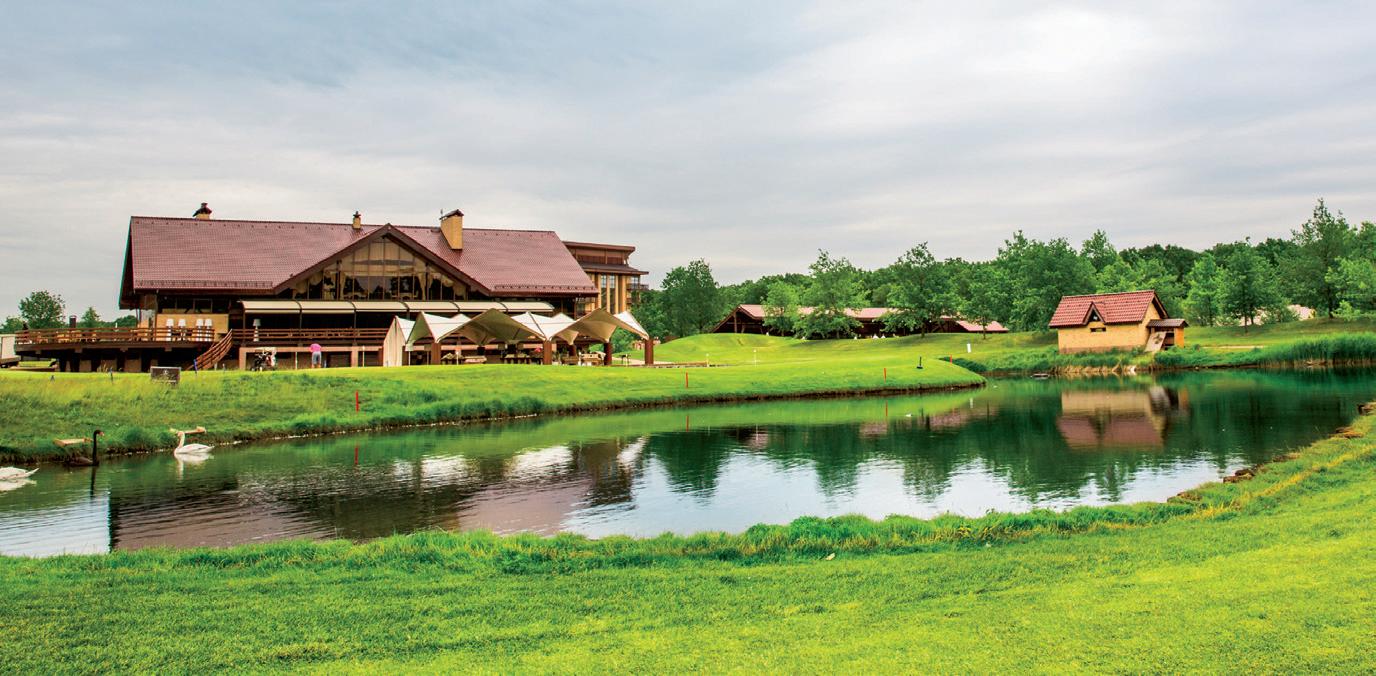

CORY ANDERSON
Located in midtown Toronto, Ontario, The Badminton and Racquet Club of Toronto welcomes Cory Anderson as General Manager/COO. Founded in 1924, this historic and prestigious private club is renowned for its welcoming community and world-class racquet sports, including badminton, squash, tennis, pickleball, and platform tennis, as well as fitness and wellness programs. Anderson was most recently General Manager at Royal Canadian Yacht Club in Toronto, Ontario.
NEIL BENNETT
Army Navy Country Club, a prestigious platinum-level private club in Arlington, Virginia, advances Neil Bennett to Director of Racquets. The club spans five hundred acres and features twenty-nine racquet courts, fifty-four golf holes, elite amenities, and a rich history, making it a premier private club nationally. Bennett, most recently Director of Adult Tennis at the club, now oversees all tennis and pickleball operations in addition to leading the club’s elite racquets operation across both indoor and outdoor facilities.
JESSICA W. BESSLER, MBA, CPA
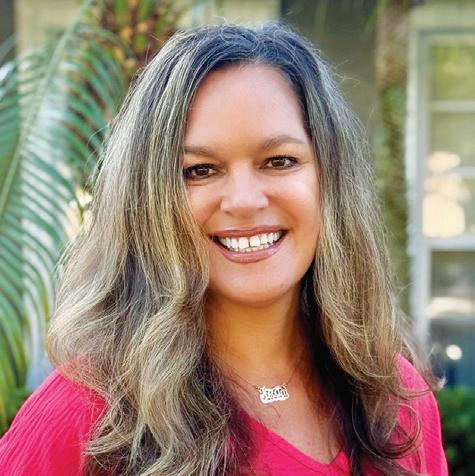

PATRICK LAXTON, CCMA
Woodland Golf Club, a premier club in Boston, Massachusetts, welcomes Patrick Laxton as General Manager. Centered around a Donald Ross-designed golf course, the club is renowned for its strategic layout and beautiful surroundings. In addition to golf, the Club boasts a well-appointed clubhouse with a variety of dining options, a cutting-edge practice facility, a lively social scene with year-round events, tournaments, and the newly opened racquet and indoor golf center. Laxton was most recently Assistant General Manager at The Country Club in Brookline, Massachusetts.
JAMES M. REISIG, CCM, CCE, CFBE
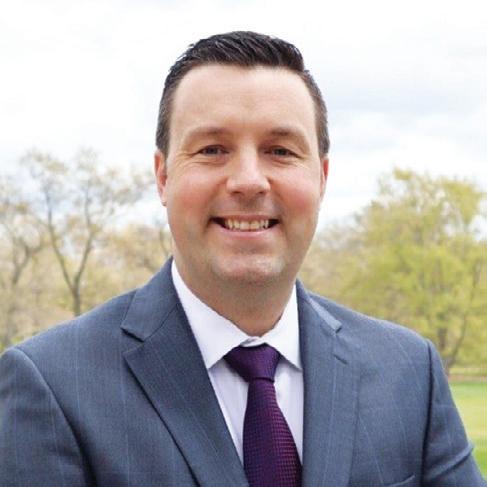
Nestled along the ocean, Sawgrass Country Club, located in Ponte Vedra Beach, Florida, welcomes Jessica Bessler as Chief Financial Officer. Active throughout the year, the club provides a variety of activities for all ages within a secure, gated residential area. The club offers a relaxed social atmosphere, diverse membership, and expanding family-friendly offerings, including dining and childcare. Bessler was most recently Vice President, Accounting & Treasury Services at Florida’s Natural Growers in Lake Wales, Florida.
DONNY LATHAM
Founded in 1951 and spanning over 200 acres, Lakeside Country Club in Houston, Texas, welcomes Donny Latham as Director of Agronomy. Club highlights include an eighteen-hole championship course, elite practice facilities, a fitness center, tennis and pickleball courts, pools, and an expansive clubhouse, all supporting its mission of top-tier, family-oriented service. Latham was most recently Director of Agronomy at Miramont Country Club in Bryan, Texas.
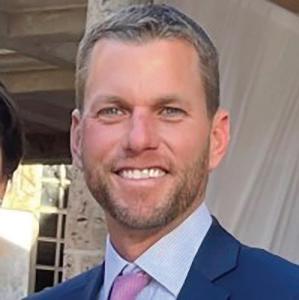
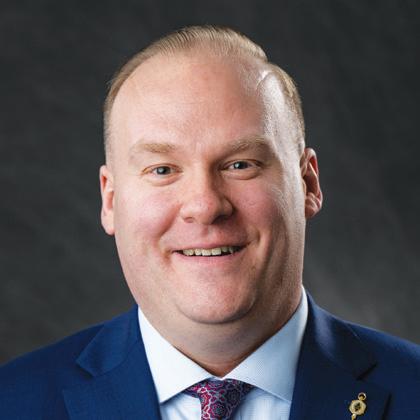
The University Club of New York, located in Midtown Manhattan, known for its architectural grandeur, elegance, and exceptional service, welcomes James Reisig as General Manager Notable club features include luxurious accommodations, world-class dining, premier event spaces for up to 300 guests, the world’s largest private club library, a distinguished fine arts collection, state-of-the-art athletic facilities, and a renowned wine cellar. Reisig was most recently Chief Operating Officer at The Tokeneke Club in Darien, Connecticut.
GRACIA SHI
Green Hills Country Club, in Millbrae, California, welcomes Gracia Shi as Director of Human Resources & Payroll. Located on the Peninsula, it provides breathtaking views, personalized service, and activities for all ages. The club fosters a strong sense of community, offering recreation, connection, and memorable experiences. Shi was most recently Senior Director of Human Resources at Hyatt Centric Fisherman’s Wharf in San Francisco, California.
ANDREW WISNIONSKI

A beacon of sailing tradition, camaraderie, and excellence on Long Island Sound, American Yacht Club in Rye, New York, welcomes Andrew Wisnionski as Executive Chef. With a rich history of championship victories, America’s Cup defenses, and Olympic achievements, its legacy is built on passion and performance. Beyond competition, the club fosters a thriving community where families and friends come together to enjoy world-class racing, social events, dining, and a timeless waterfront experience. Wisnionski was most recently Executive Chef at the Country Club at Castle Pines in Castle Rock, Colorado.
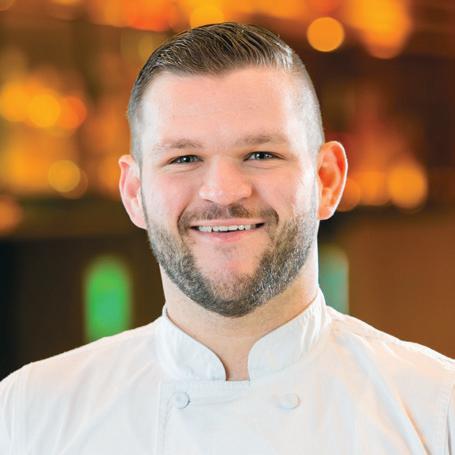


PEOPLE FOCUSED, QUALITY DRIVEN

Jason Baum | Executive Chef Pine Creek Sporting Club
Mike Blazer | General Manager/COO Berkeley Hall Club
Thomas Boggs | Director of Finance Trinity Forest Golf Club
Frederic Boldron | Executive Chef Mountaintop Golf & Lake Club
Matthew Brennan | Director of Golf Island Country Club
Kevin Burke, PGDip IEng MIMechE Head of Facilities & Maintenance Loch Lomond Golf Club
Christina Dalton | General Manager/COO Long Beach Country Club
Paul Diaz | General Manager/COO Park Ridge Country Club
William Griffon, III, CCM | General Manager Tributary
Jeff Hartigan, CCM, CCE | General Manager/COO Burlingame Country Club
Scott Hill | Director of Racquets Briarwood Country Club
Kyle Hillhouse, CCM | Assistant General Manager The Club at Admirals Cove
Marlon Hysi | Club Manager Tequesta Country Club
Joel Inman, CCM, PGA | General Manager/COO Montclair Golf Club
Al Jader, Esq | General Manager/COO Lafayette Club
Jay Johnson, CCM, CS | General Manager/COO Hallbrook Country Club
Diann Kite, CPA, CGMA Director of Finance/Controller Lake Waramaug Country Club
Kurt Kochs | Assistant General Manager Des Moines Golf & Country Club
Jesse Langridge | General Manager Rams Hill Golf Club
Robert Leigh | General Manager Denham Golf Club
Brent Moon | Director of Grounds Rice University
Titus Oliphant | General Manager Pequot Yacht Club
Kevin Pinkert | General Manager/COO The Buffalo Club
Marc Ray, MCM, CCE, CCM General Manager/COO
Oakland Hills Country Club
Christopher Rhodes | General Manager/COO The Springs Community Association
Shain Rodrigues, CCM | General Manager/COO Sea Oaks Beach & Tennis Club
Steven Spatafore | Director of Agronomy Los Altos Golf & Country Club
Scott Stuart, CCM, CCE | General Manager/COO Glen Oak Country Club
Vincent Tracy | General Manager Mt Hawley Country Club
Patrick Truchan, MBA, LCAM General Manager/COO Lexington Country Club
Davina Weinstein, CCM | General Manager/COO The Piedmont Club
Peter Woll, CPA | Chief Financial Officer Glen Oaks Club
Patrick Wynn | General Manager/COO North Jersey Country Club

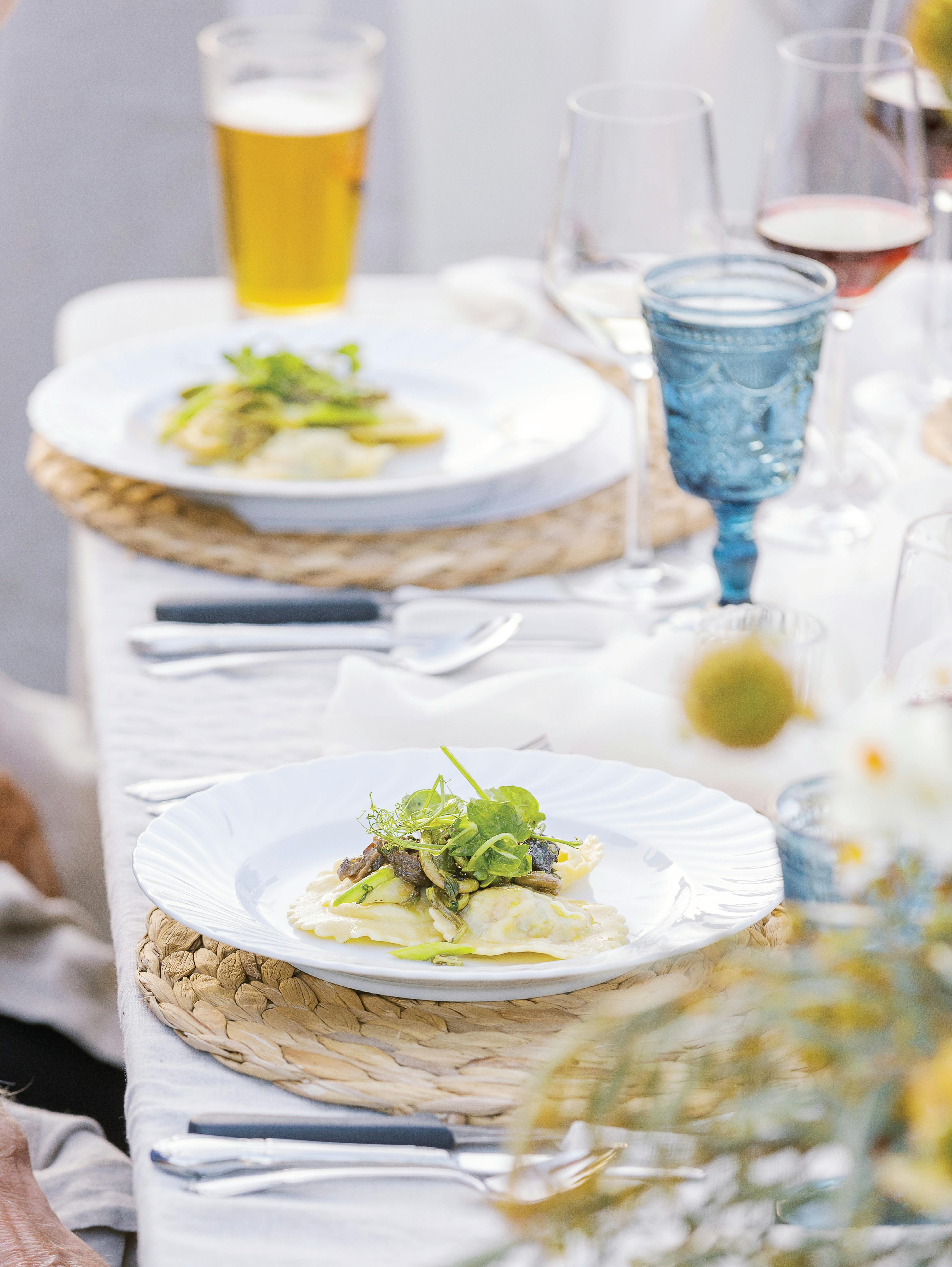
CONSISTENCY AS A CRAFT
Executive Chef Beth Cosgrove shows how steady standards and smart collaboration keep thousands of members engaged at Palmetto Bluff without losing the details that matter.
By Joanna DeChellis • Editorial Director
WHEN EXECUTIVE CHEF BETH COSGROVE arrived at Palmetto Bluff Club just over a year ago, she stepped into one of the most complex food-and-beverage programs in the club space. The Bluffton, South Carolina property spans 20,000 acres and supports multiple restaurants, plus a relentless calendar of member events that often take place in remote corners of the property with no permanent kitchens in sight. The scale is daunting. The expectations are high. The members, with more than 1,200 homes and growing, expect consistency across every plate and every party.
For Cosgrove, that word—consistency— has become the cornerstone of how she leads her team.
“Every chef meeting I lead starts with that word,” she says. “We oversee multiple outlets and events with a very young crew. Many are interns. They’re here to learn, but we’re also responsible for delivering a product that lives up to what our members expect. We’re not a cooking school. We’re a luxury club, and our members see us as part of the value of their investment.”

SETTING STANDARDS IN A YOUNG KITCHEN
Palmetto Bluff’s kitchen brigade looks different from many clubs. Through the J-1 and TN visa programs, the team is made up of young chefs from around the world, many of them in their first or second professional posts. That creates opportunity and challenge.
“It’s a balancing act,” Cosgrove says. “We want to give these chefs a chance to learn, but at the same time, we have to deliver consistent, high-quality food every day. So it’s constant reinforcement: Did you taste that? Where’s the recipe? Is the presentation right? It’s daily reminders. That’s the only way the standard sticks.”
Rhy Waddington, Director of Culinary, says that emphasis on consistency was exactly what Palmetto Bluff needed. “[Cosgrove] outworks everyone,” he says. “She’s assertive, she’s earned the team’s respect, and she’s brought stability and structure. I’ve stepped back from the creative side so her talents could come through. People still assume I’m behind some of the menus, but I want everyone to see this is Beth. She deserves that recognition.”
Her system for building accountability is simple but effective. Menu changes are scheduled in advance. Chefs are expected to lead the refreshes themselves, with Cosgrove pushing them toward ownership. “Sometimes I just send the Outlook invite,” she says. “It’s on their calendar. A month from now, your menu changes. It’s about nudging them into that habit, so the menu stays fresh without me dictating every move.”
COLLABORATION WITH EVENTS
Consistency is only part of the story. Palmetto Bluff is known for events that are as ambitious as they are varied. Fourth of July weekend can mean serving 1,500 members out of an equestrian arena with no kitchen. Smaller dinners might be staged in a forest clearing or at a lakeside lodge.
To make those events successful, Cosgrove works closely with Stephanie Sekula, Director of Special Events. Their
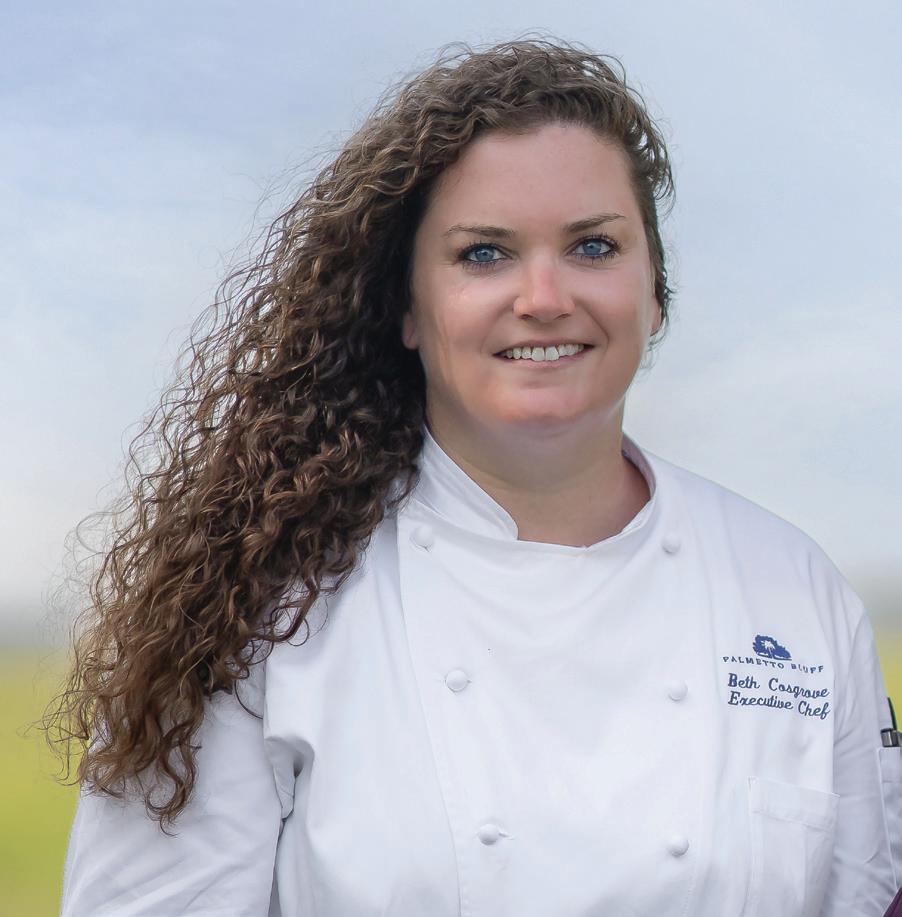
At Palmeto Bluff Club, Executive Chef Beth Cosgrove is known for her creative, consistent, and high-quality cuisine.
office is one shared room, which means conversations happen in real time.
“It’s a lot of turning your chair around and saying, ‘This is what I’m thinking— what about you?’” Sekula says. “[Cosgrove] comes in with food ideas that help shape the whole design. And she’s not afraid to tell me when something won’t work in a given space or on a menu. That directness makes collaboration easier.”
The results speak for themselves. Earlier this year, the team launched “Off Course,” a series of curated dinners where members received hand-delivered invitations and were shuttled to a secret location for a five-course menu.
“That’s where [Cosgrove] shines,” Sekula says. “It isn’t just food. It is an experience. Members feel like they are part of something one-of-a-kind.”
Cosgrove agrees. “When you’re cooking out of a remote site, you can’t take shortcuts,” she says. “Every detail has to be thought through. It’s stressful, but it’s also exciting, because the payoff is huge.”
USING NOSTALGIA AND GLOBAL INFLUENCE
Consistency does not mean monotony. Cosgrove is constantly looking for ways to surprise members without abandoning
Palmetto Bluff Club spans 20,000 acres and supports multiple restaurants, plus a full calendar of member events.
Where Ideas Become Experiences
When members of Palmetto Bluff gather for a holiday weekend or a private dinner in the woods, chances are the experience was shaped by Stephanie Sekula, Director of Special Events.
Sekula didn’t set out to work in private clubs. She studied public relations, worked in banking, and managed events at a museum in Savannah before a chance opening brought her to Palmetto Bluff. “I had never heard of this place,” she says. “But when I came for the interview, I knew immediately it was special.”
That was four years ago. Today, Sekula leads a calendar that stretches well past 300 programs annually. From major holidays that draw thousands to intimate dinners tucked away in remote corners of the property, she sees each event as an opportunity to surprise members. “I never want it to feel like an assembly line,” she says. “Every program should feel crafted for that specific moment.”
Her approach is grounded in collaboration. Sekula is known for pulling ideas from every department and encouraging her team to bring forward concepts. “The best events come from brainstorming together,” she explains. “Some of our most successful themes started as offhand suggestions that we shaped into something bigger.”
Equally important is her ability to stay calm under pressure. “Even if the wheels are falling off, I don’t show it,” Sekula says. “I tell my team there’s always a solution. We don’t dwell on the problem,we fix it.” That steady leadership, colleagues say, is what allows Palmetto Bluff to execute programs that would overwhelm most clubs.
Sekula measures her success by the member response. “It’s not about how many people showed up or if the decor was perfect,” she says. “It’s about whether members felt cared for, whether it felt new and personal. That’s when I know we did our job.”
Looking back, she credits her winding career path with giving her the range she draws on today. “Working in concerts, cultural festivals, weddings, and museums taught me to adapt to all kinds of challenges,” she says. “Here, that adaptability matters. No two events are ever the same.”
For Palmetto Bluff’s members, that’s exactly the point.
familiarity. One of her most talked-about events was a retro-themed dinner inspired by old Betty Crocker cookbooks.
“I did homemade Spam grilled cheese, chipped ham, and pretzel salad,” she says. “At first, members were skeptical. But it tapped into nostalgia. They remembered those dishes from their childhood, and we gave them polish. They loved it.”
Other dinners showcase her global background. A Japanese pop-up as part of the “Around the Table” series offered members dishes they could never replicate at home. A Greek poolside event complete with a gyros machine and regional wines turned into a crowd favorite.
“Her ability to execute themed dinners at a high level keeps members engaged,” Waddington says. “They eat it up. It’s not predictable.”
REGIONAL IDENTITY
After nearly two decades cooking abroad, Cosgrove arrived at Palmetto Bluff with a deep background in global flavors but little direct experience with Southern food. She understood that to connect with members, she needed to immerse herself in Lowcountry traditions.
That meant studying cookbooks, researching the history of Gullah foodways, and spending time in Bluffton and Savannah to taste the region firsthand.
“I had never had a fried green tomato before moving here,” she admits. “So I benchmarked every version I could find. You can’t do this job without embracing the local scene. It would be like living in Hong Kong and only eating Western food. You’d miss the point.”
That curiosity translates into menus
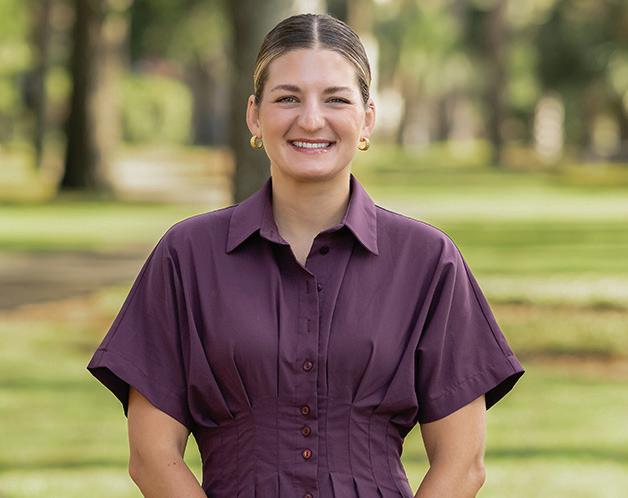
Palmetto Bluff Club’s Director of Special Events, Stephanie Sekula, works to ensure events large and small are seamless.
that respect the region while weaving in broader influences. Members might see Carolina Gold rice alongside Japanese flavors, or traditional Southern seafood balanced with Mediterranean touches.
BUILDING ON MOMENTUM
Growth at Palmetto Bluff shows no sign of slowing. A third golf course is under construction. More homes and amenities are on the horizon. With every expansion comes new kitchens, new menus, and new expectations.
Cosgrove sees that as opportunity. “There’s so much coming that we joke we could retire here with the amount of projects ahead,” she says. “For me, that’s exciting. Each new outlet is another chance to build something, to keep pushing forward.”
For Waddington, that future is in good hands. “[Cosgrove] has made an enormous impact already,” he says. “She’s consistent, she’s creative, and she knows how to lead. That’s the combination clubs need.”
Sekula echoes that sentiment. “She gives us confidence,” she says. “Whatever we dream up, she can deliver.”
Cosgrove keeps it simpler.
“At the end of the day, we’re feeding people,” she says. “Food is intimate. It’s what people taste and remember. If we make those moments count, then we’ve done our job.” C+RC
QuikThermTM Cook and Hold Convection Oven
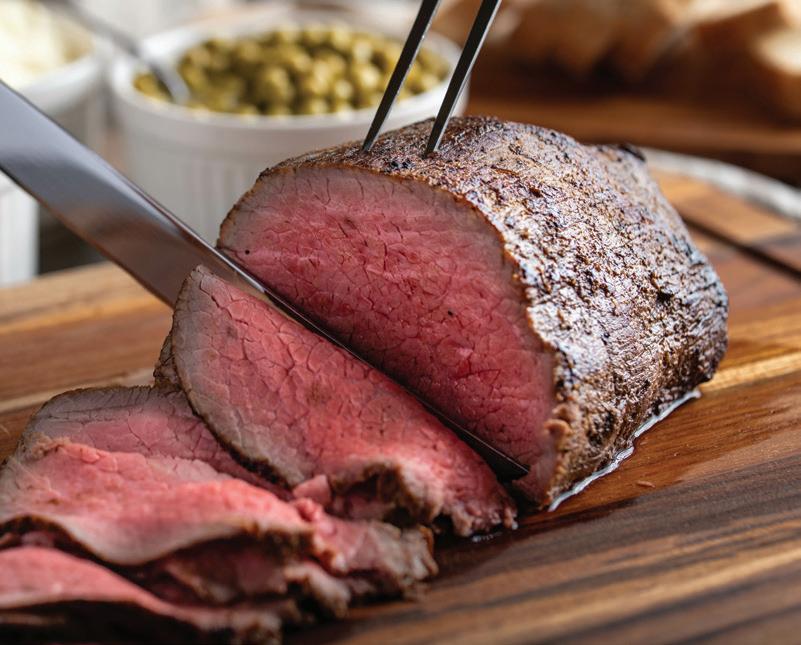

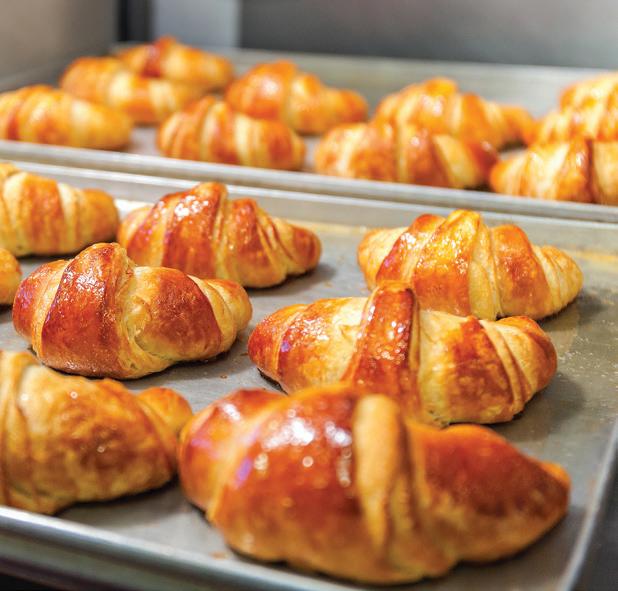
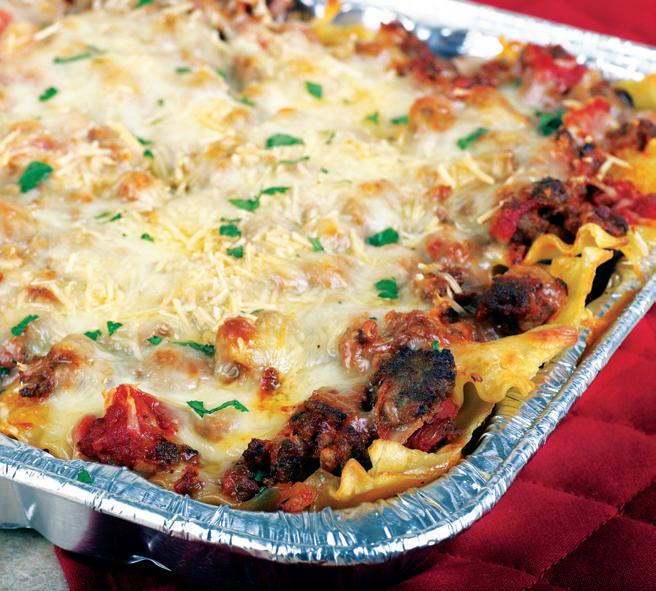

● Preheats to 350° less than 10 min.
● Roast, cook, bake, air fry, rethermalize and hold with precise temperature and humidity control.
● Allows end user flexibility to increase or reduce air flow.
● In both 12KW & 8KW versions. Full & half size available!
● Non-venting; does not require a hood. (*Check your local codes)
Model shown: RO151HWUA9D (with optional window and stand)
Model shown: RO151FWUA18DE

Naples Lakes CC Elevates Course Care with $2.2M Turf Care Center Renovation
With this upgrade—and several other projects in the works—the Florida club strikes a balance between short-term disruption and long-term value.
By Rob Thomas • Contributing Editor
NAPLES LAKES COUNTRY CLUB IN NAPLES , Fla., has completed a transformative $2.2 million renovation of its Turf Care Center, reinforcing the club’s commitment to golf course excellence, operational efficiency, and environmental stewardship.
The multi-phase project, which began in January 2023 and concluded this past May, addressed critical infrastructure issues and elevated working conditions for the course maintenance team. Years of stormwater runoff had corroded the building’s metal siding, creating structural vulnerabilities and wildlife intrusions. Black mold discovered in staff areas forced personnel to relocate into temporary trailers— accommodations they used for more than 30 months.
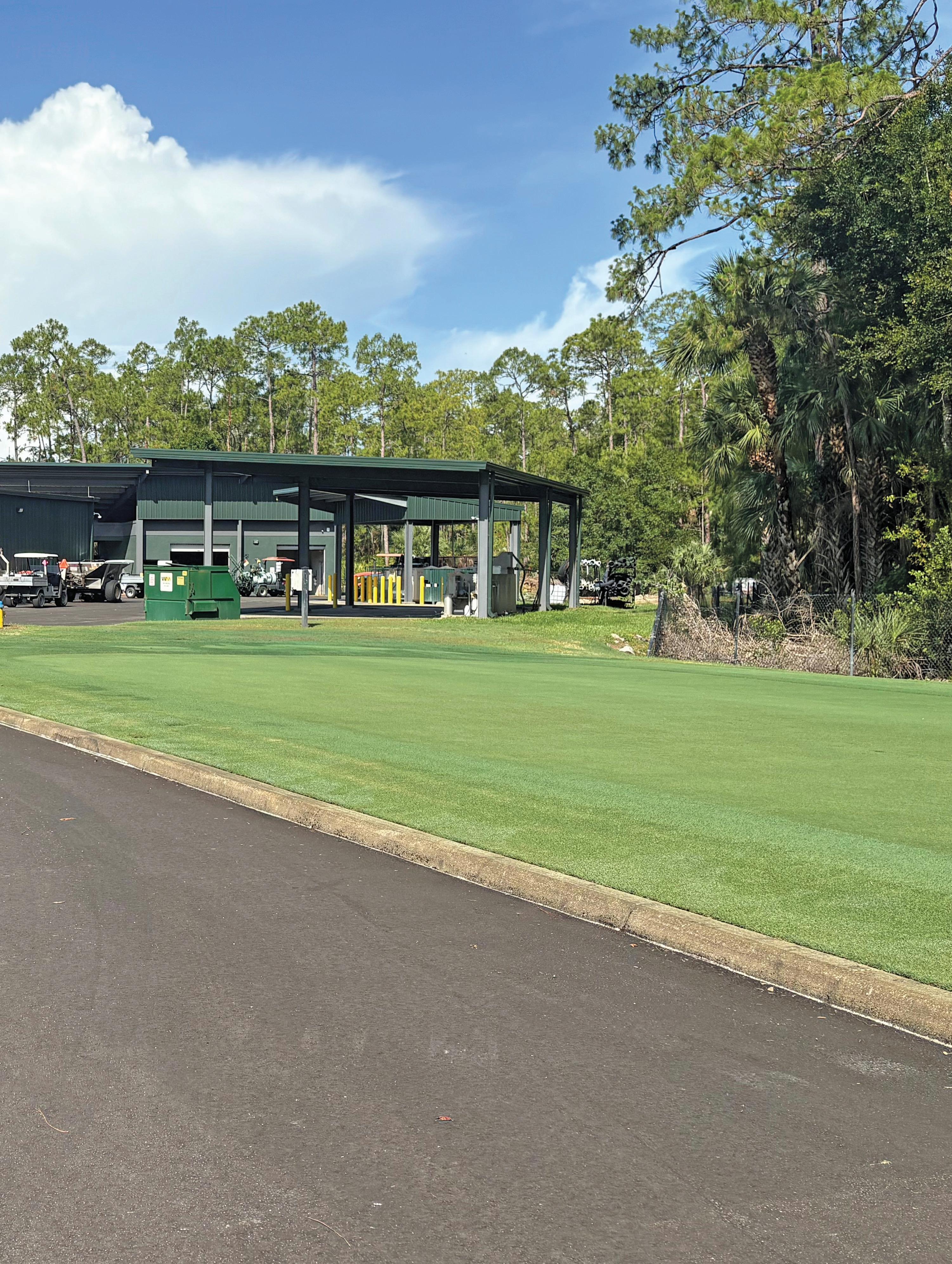
“The condition of the Turf Care Center had deteriorated significantly,” says Joseph F. Basso, General Manager and COO. “The siding was rusted, power and HVAC systems were inadequate, and the mechanic bay layout was inefficient. While it didn’t always impact daily operations, it certainly took a toll on staff morale.”
The renovation included a full rebuild of the main building, upgrades to the fertilizer and chemical storage areas, installation of covered fuel and washdown stations, and the addition of canopied material
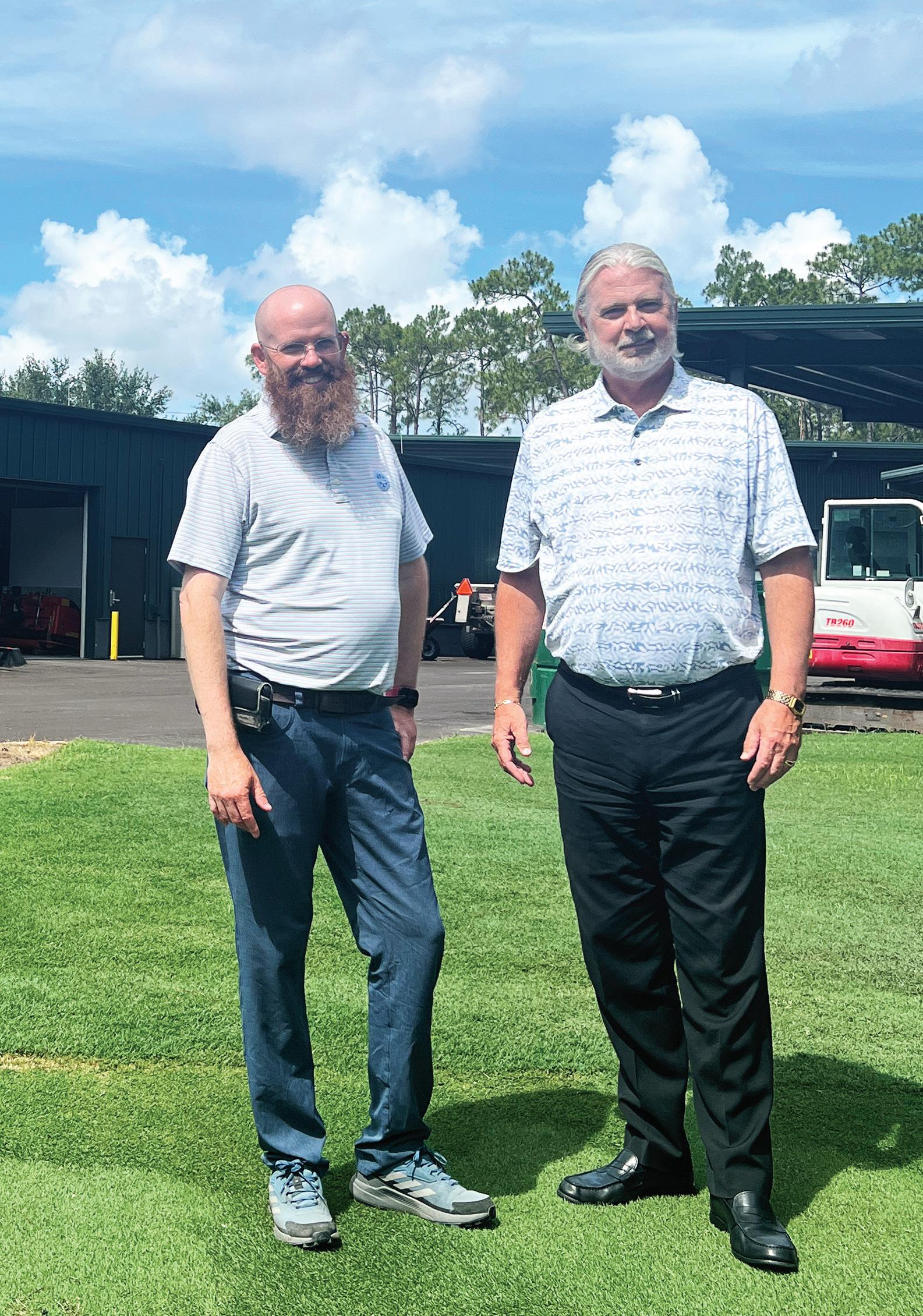
storage bins. Interior renovations created safer, more efficient workspaces and dramatically improved crew morale and productivity.
“The upgraded personnel areas provide a better working environment for the crew,” says Greg Weaver, Naples Lakes’ Golf Course Superintendent. “The canopies protect staff and equipment from weather, and the new layout improves traffic flow. Plus, unless you’re on a beach, no one likes dealing with wet sand.”
Environmental stewardship was central to the project’s design. As
a Certified Audubon Cooperative Sanctuary, Naples Lakes took extra care to ensure the Turf Care Center—located adjacent to a conservation area—would not expand its footprint. All materials and equipment are now stored under cover and securely contained to avoid environmental hazards.
“We made provisions to our power grid to accommodate future EV equipment,” Weaver adds. “Dedicated space and new roofing over our chemical and fertilizer storage areas were tremendous upgrades in terms of both safety and sustainability.”
“The upgraded personnel areas provide a better working environment for the crew. The canopies protect staff and equipment from weather, and the new layout improves traffic flow. Plus, unless you’re on a beach, no one likes dealing with wet sand.”
- Greg Weaver, Golf Course Superintendent (pictured left, with Joseph F. Basso, General Manager and COO)
Upgrading the Turf Care Center was the second phase in the club’s broader modernization plan, following the $4.3 million creation of a resort-style recreation and dining venue. Basso notes that the prioritization of the Turf Care Center was driven by its urgent condition and its foundational role in maintaining the club’s Arnold Palmer Signature Design golf course—Naples Lakes’ most valuable asset.
“Having adequate support facilities is integral to keeping the course in top shape,” Basso explains. “This project was also a smart financial move. We
Naples Lakes CC’s $2.2 million Turf Care Center renovation addressed critical infrastructure issues and elevated working conditions for the team.
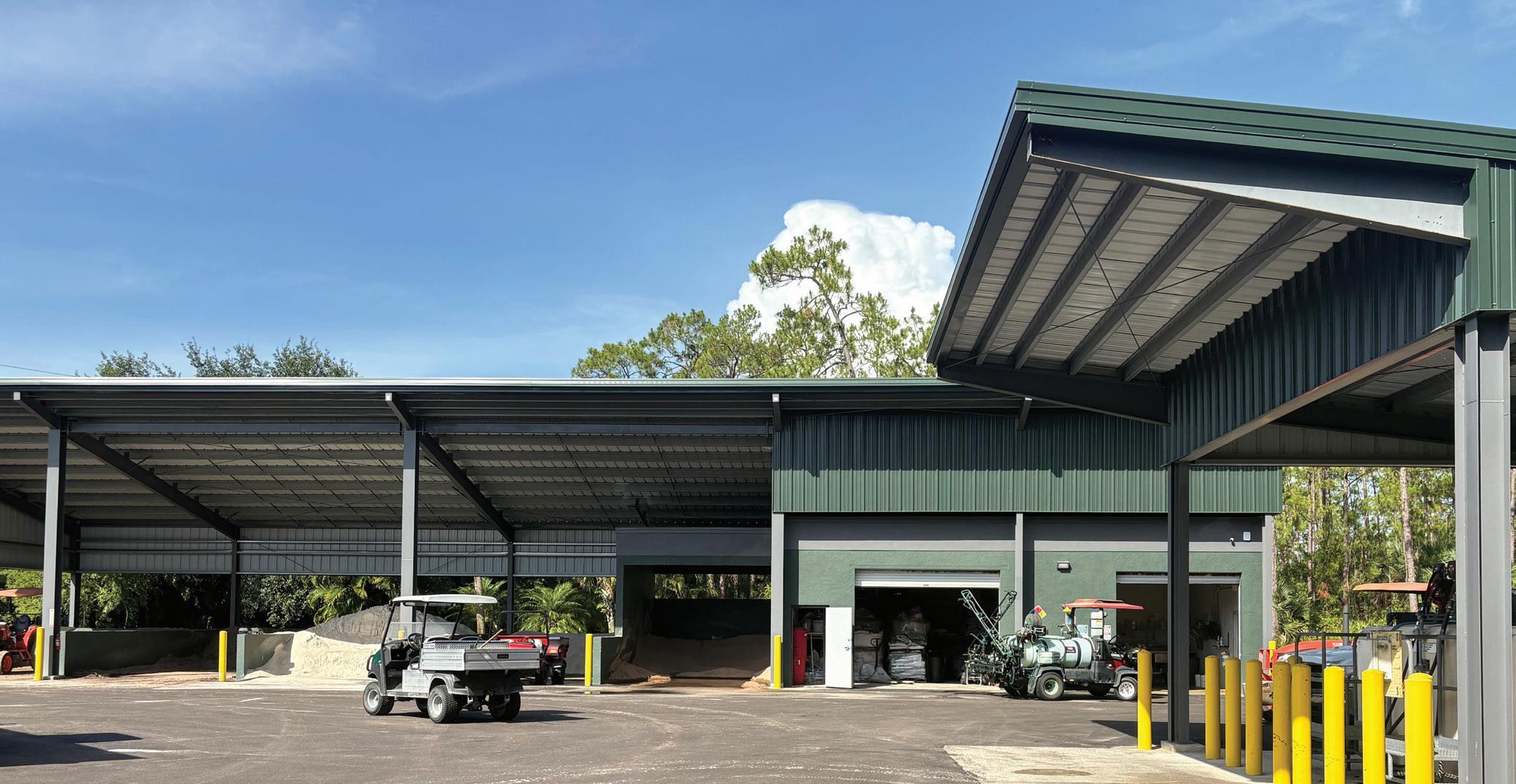
were able to fund it entirely through reserves by strategically deferring non-urgent items in our Reserve Study and recalculating distributions with our financial analysts. It didn’t require a new assessment or additional debt.”
The club’s leadership kept member disruption to a minimum and ensured strong communication throughout construction. “Our Golf & Green Committee and board were deeply supportive,” Basso says. “Members appreciated our transparency and the urgency of improving conditions for our staff. We used monthly board meetings, regular email updates, and GM-hosted coffees to keep everyone informed.”
Executing the project over 30 months demanded agility and strong partnerships. “You can’t anticipate everything,” Basso adds. “You have to be ready to pivot. The most important lesson was to be patient, evaluate alternatives carefully, and make the best decision with the information available. Our contractor was phenomenal in helping us adapt to changing building codes and manage phase-by-phase construction.”
With upcoming projects including new pickleball courts, a clubhouse decor refresh, and a mid-scale golf course renovation, Naples Lakes is striking a balance between short-term disruption and long-term value.
“We’ve essentially checked the Turf Care Center off the list,” Basso says. “It’s now a first-class facility that matches or exceeds what other clubs in our area offer. And best of all, we won’t need to touch it again for a decade or more.” C+RB

Club



Finding the Right Tech Balance
At Forsyth Country Club, technology supports the member experience without taking center stage.
By Joanna DeChellis • Editorial Director
CLUBS HAVE LONG BEEN CAUTIOUS when it comes to adopting new technology. That hesitation has often been rooted in a desire to protect the member experience, but it has also left many operations struggling to catch up.
At Forsyth Country Club in Winston-Salem, N.C., Communications & Technology Manager Carly Wilson has helped redefine how a club can strike the right balance, introducing new tools, building buy-in, and showing that technology can support hospitality without overshadowing it.
“The strategy really boils down to balance,” says Wilson. “With technology, silence is a good sign. Members aren’t going to say, ‘Wow, this app is amazing.’ But if they’re not asking, ‘What’s wrong with the app or the tee sheet?’ that means it’s working.”
That focus on member experience has guided Forsyth’s approach to communication. Email remains central, but the club has shifted toward more targeted messaging and supplemental tools.
“We’ve increased our overall email open rate from the 40s to the 80s just by being intentional,” says Wilson. “If you send a note to the entire club, it tanks
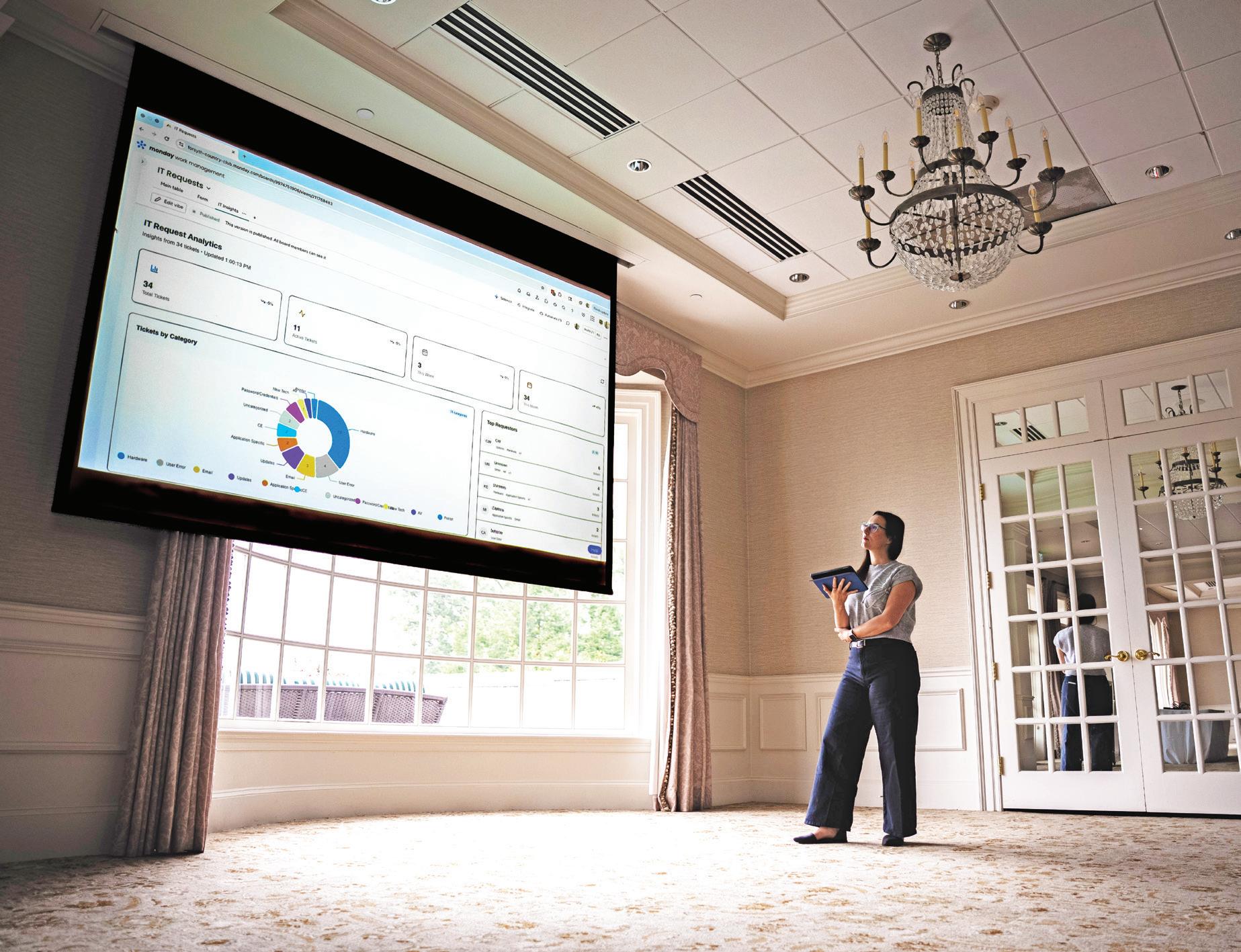
Forsyth CC Communications & Technology Manager Carly Wilson cites consistent, relevant messaging among the keys to member experience and engagement.
your numbers. But if you send it to the exact group who cares about that topic, you know they’ll read it.”
Push notifications and segmented interest groups have helped tighten the flow of information even further, while social media has become an extension of the club’s personality. “Our members are so much fun online,” says Wilson. “We’ll post live coverage from a bagpiper at

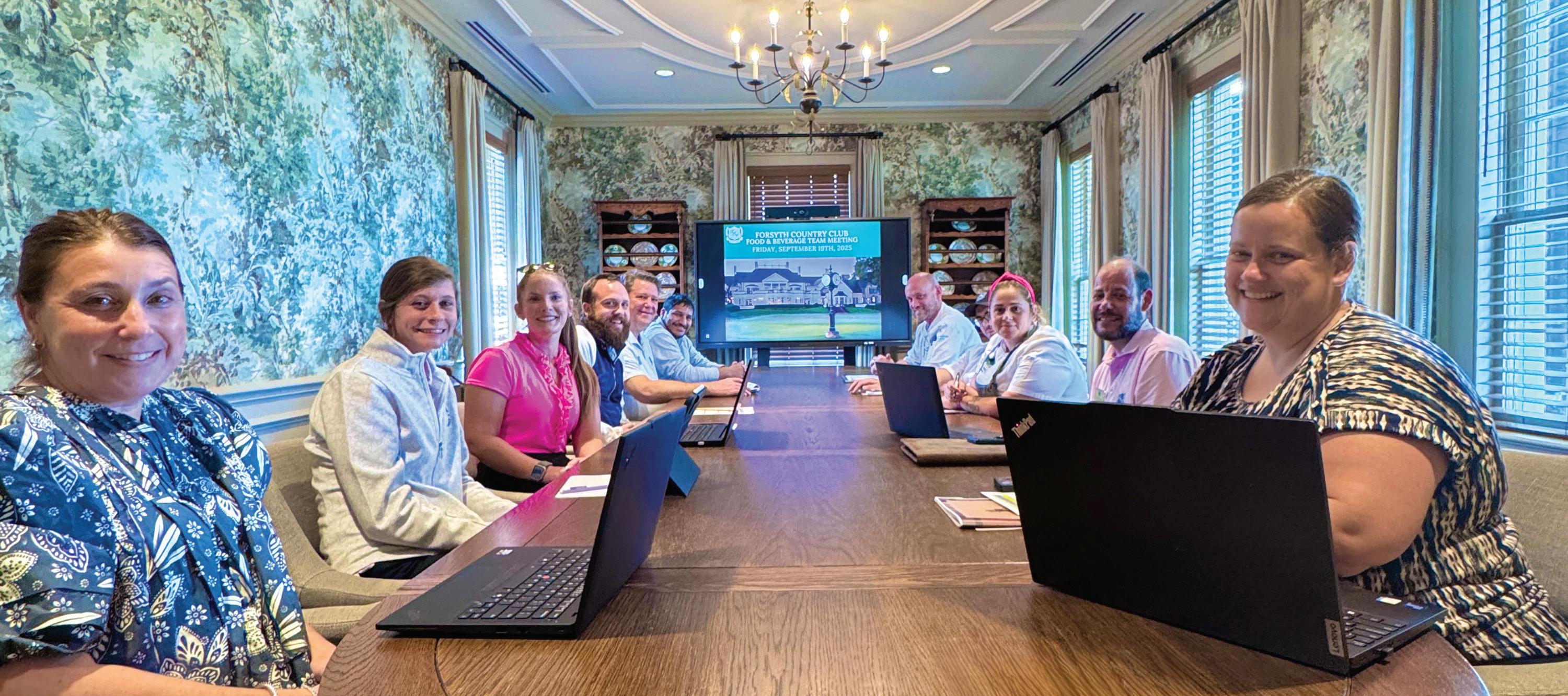
a member-guest, or let them vote on a kids’ movie night. It’s casual, interactive, and it keeps them engaged.”
Building that consistency has taken time, but the results are clear. Engagement has grown sharply, and members are more likely to respond to posts and share their own experiences. The lesson for other clubs is straightforward: Consistency and relevance matter more than volume.
The back end of technology integration is often where clubs run into challenges, and Forsyth is no exception.
“Integration means different things to different people,” says Wilson. “Just because two systems play nicely together doesn’t mean it’s seamless. Sometimes there’s extra work on the back end, but it’s worth it if the member experience improves.” That willingness to accept some tradeoffs has allowed the club to combine the strengths of different systems and deliver more effective solutions without overwhelming staff or members.
Educating the team has been another critical piece. Forsyth created a technology committee that brings together department heads, line staff, and managers to share what’s working and where improvements are needed.
“I was afraid it would turn into a complaint circle,” Wilson admits. “But instead, people said, ‘This works, can you show us how?’ It has become a space to
Forsyth CC’s technology committee brings together department heads, line staff, and managers to share what’s working and where improvements are needed.
learn from each other and surface ideas I’d never see otherwise.”
By making technology a shared responsibility, the committee has created buy-in and given staff a greater sense of ownership.
Looking ahead, Wilson sees data as the next frontier. Clubs are already collecting information across golf, fitness, dining, and events, but much of it lives in separate systems.
“We want to make data-driven decisions about everything we do,” she says. “Right now we have fitness data, golf data, dining data—all in different places. Tools that can pull that together and make it actionable are at the top of the list.”
Artificial intelligence and automation are also beginning to play a role, though Forsyth’s focus has been on small, practical steps. “Sometimes it’s as simple as teaching someone to schedule a report instead of pulling it every day,” Wilson explains. “Those little wins save time and stress so staff can focus on the work they do best.”
The lesson from Forsyth is that technology should serve as a quiet
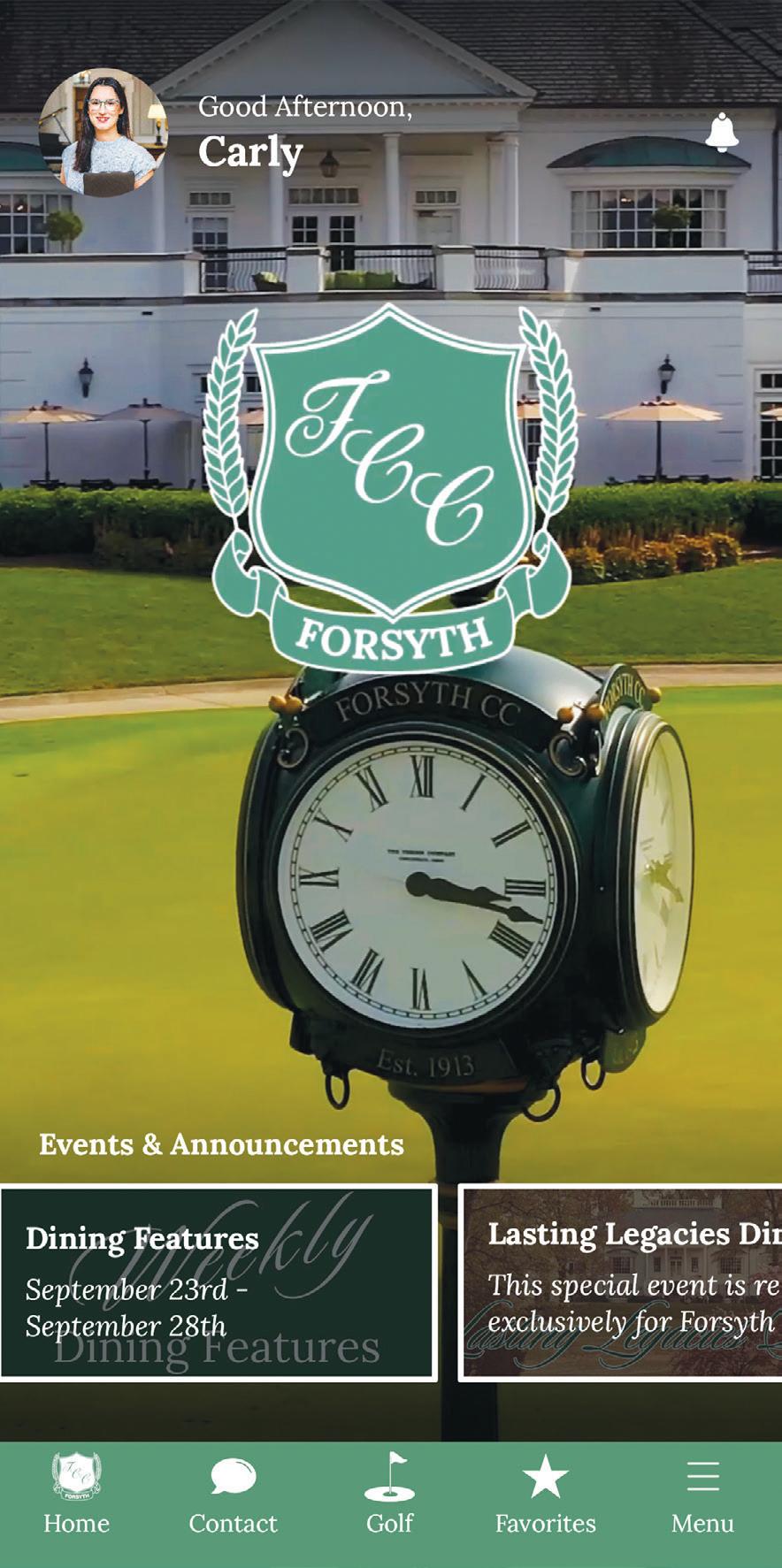
partner, not a centerpiece. Clubs don’t need every shiny new tool, but they do need to evaluate how systems work together, how staff can be supported, and how data can inform decisions.
As Wilson puts it, “What matters is making technology work quietly in the background so hospitality can stay at the forefront.” C+RB
BARN RAISING FOR A NEW GENERATION: CART FACILITIES SET UP SHOP WITH ENHANCED AMENITIES
Clubs invest in updated, roomier spaces for storing and maintaining new golf carts.
By Pamela Brill • Contributing Editor
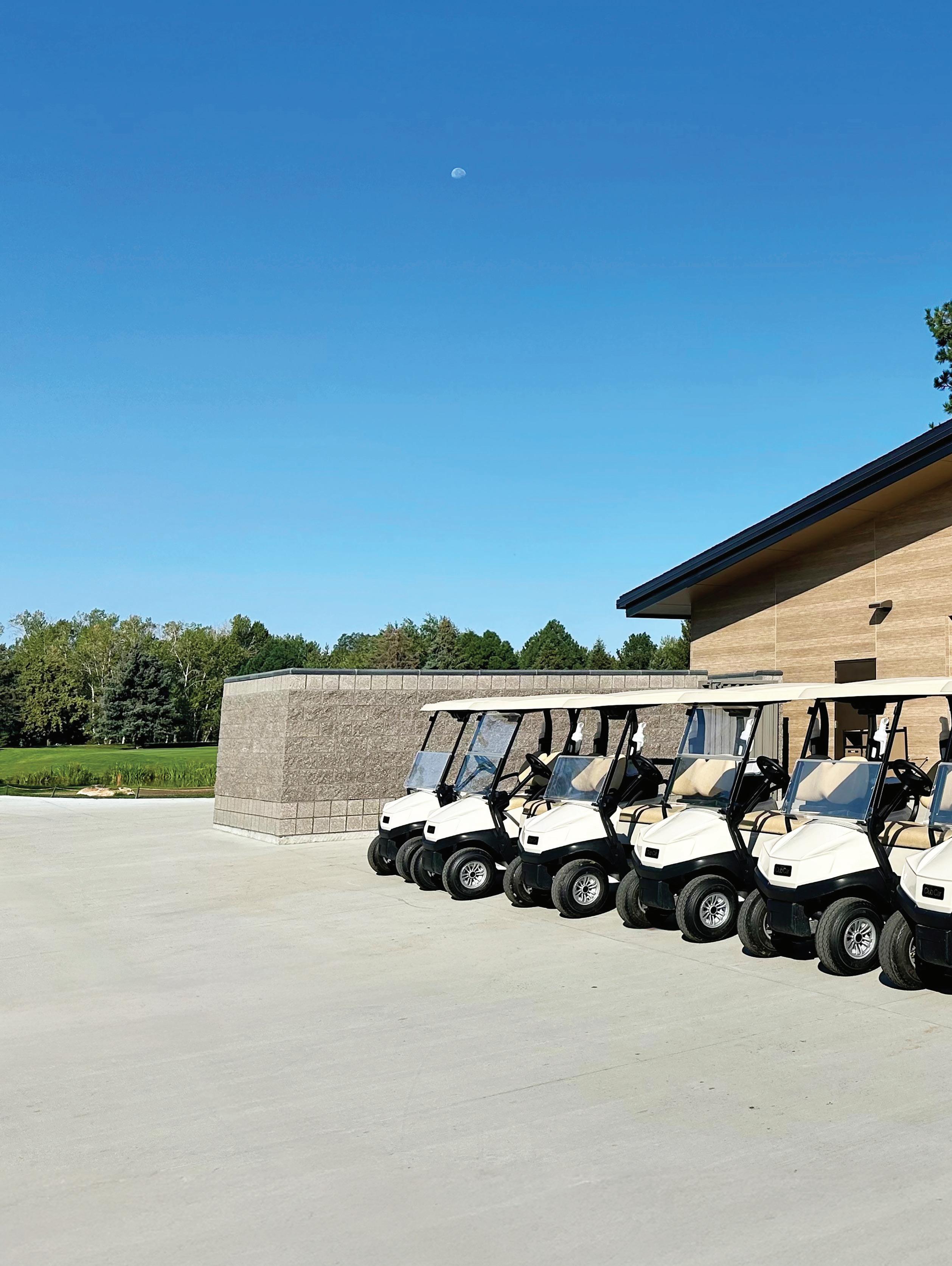
THERE’S A BUZZ IN THE AIR at clubs and resorts across the country—and it’s not just from the energy generated on the golf course. As facilities replace their standard golf carts with all-electric, energy-efficient models, they require upgraded digs to properly charge and house these vehicles. And with an increased demand for time on the course, streamlining golf program efficiency has become even more of a necessity. These two cart barn projects highlight their designs for maximum usage and how, in a short time, they are already improving overall golf operations.
PLUG AND PLAY
In the semi-arid conditions of Boise, Idaho, where hot, dry summers are the norm, contending with the elements has always been a challenge. So when the City of Boise decided to invest in a properly outfitted facility at Warm Springs Golf Course, a new cart barn was high on the list of amenities.
“If we are building a new facility and purchasing a whole new fleet of electriconly carts—both of which we did—it was essential to have a state-of-the-art storage space for them,” says Doug Hol-
loway, Parks and Recreation Director for the City of Boise, who helped spearhead the project. (He, along with now-retired Warm Springs Golf Course manager Scott McGeachin, approved the funding and design.) The nearly $12 million clubhouse project, which included a new pro shop, grill and patio overlooking the 18th hole, was unveiled this past July and has since garnered rave reviews from visitors and locals alike.
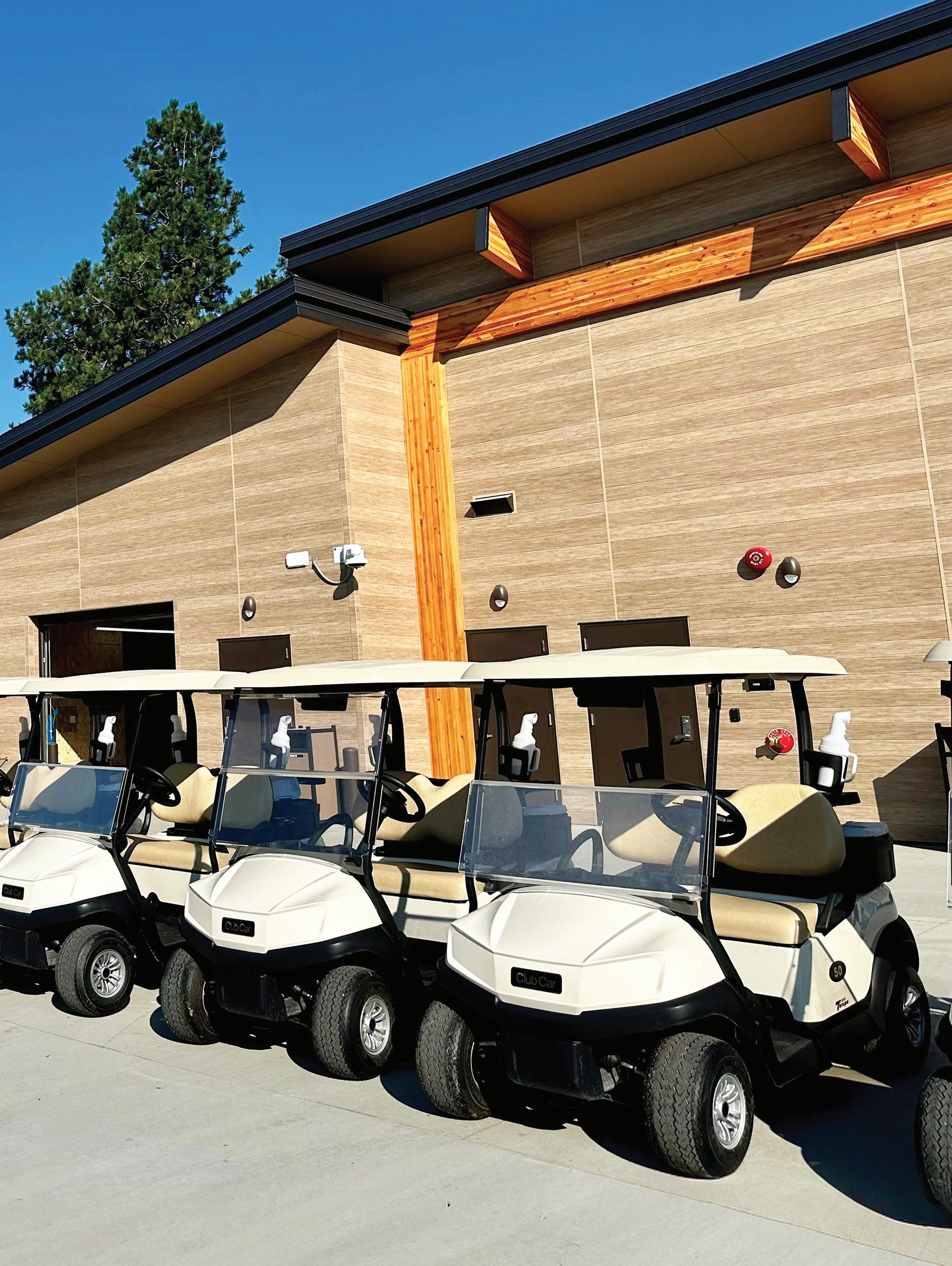

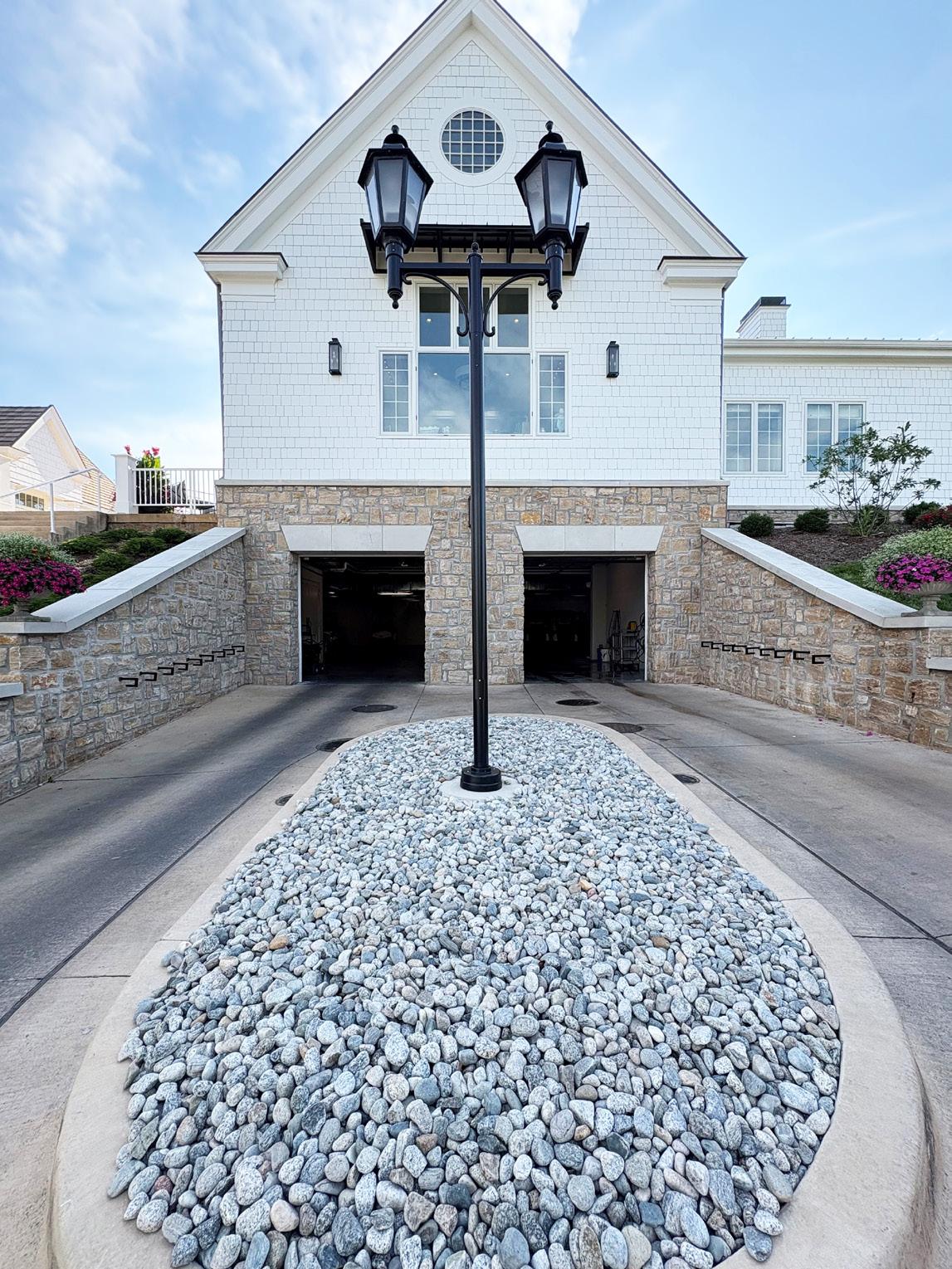
Situated in the southeast Boise corridor, just off the Boise River Greenbelt hiking trails, the new public facility was designed to attract locals and visitors to this area. The 4,900-square-foot cart barn provides convenient access on and off the golf course and serves as a dedicated space for cart storage and maintenance. While the previous design was primarily a makeshift set-up that allowed up to 40 carts, the new building holds 60 spots, all of which have their own charging stations. (Two additional stations are reserved for a beverage cart and the club’s range picker.)
A flexible, open floor plan—with no lanes or bays—is a plus for golfers who can simply pull in, park their vehicle and charge it as needed. Concrete flooring was chosen for ease of maintenance,
“Every design decision was made with the member experience in mind, ensuring that the pool and its surrounding amenities create a luxurious, engaging and functional environment.”
- Megan Lolli, Marketing Director
while LED lighting and HVAC systems are essential components of the fully electric, energy-efficient design. The barn’s exterior features a metal roof and fiber cement siding, both of which were selected for their ability to withstand golf ball collisions. A separate cart-washing area is located outside and adjacent to the barn for golfers’ convenience.
In the past few months since Warm Springs Golf Course’s re-opening, the reimagined spaces have been well-received, as have the electric golf carts. “Because we are able to store them in a state-of-theart facility, they will last longer, run more efficiently and maintain a more attractive appearance,” notes Holloway.
MEMBER AND STAFF-APPROVED
When clubhouse improvements are made, they often benefit membership only. But with last September’s installation of a new cart barn at Hallbrook Country Club in Leawood, Kan., golf operations have seen a tremendous improvement, making the staff’s jobs much more manageable as well.
An outdated clubhouse necessitated the decision to build a new structure designed with room for additional amenities on the lower level. But in order to allot the necessary square footage, the original cart barn had to be relocated—a multistep process that involved a tiered layout. “We excavated an awkward hill between the bag drop and cart circle, built the cart barn, put the hill back and constructed a golf shop on top of the cart barn,” explains Head Golf Professional Kyle Capps, PGA.
The full-service, 7,000-square-foot space, budgeted at $6 million, houses bag storage, a club repair studio, player service offices, golf shop/push cart storage and dedicated laundry for golf operations.
Hallbrook’s barn was designed with golfers in mind, providing convenient, same-level access to the cart staging circle, men’s and women’s lockers, dining facility and golf simulator room. Utilitarian aesthetics feature concrete flooring and LED, ceiling-mounted lighting. Without any pillars or columns to hinder sight lines, the floor plan is marked with parking spaces for 80 vehicles (74 fleet carts and six utility
LOCH LLOYD COUNTRY CLUB
Loch Lloyd, Mo.
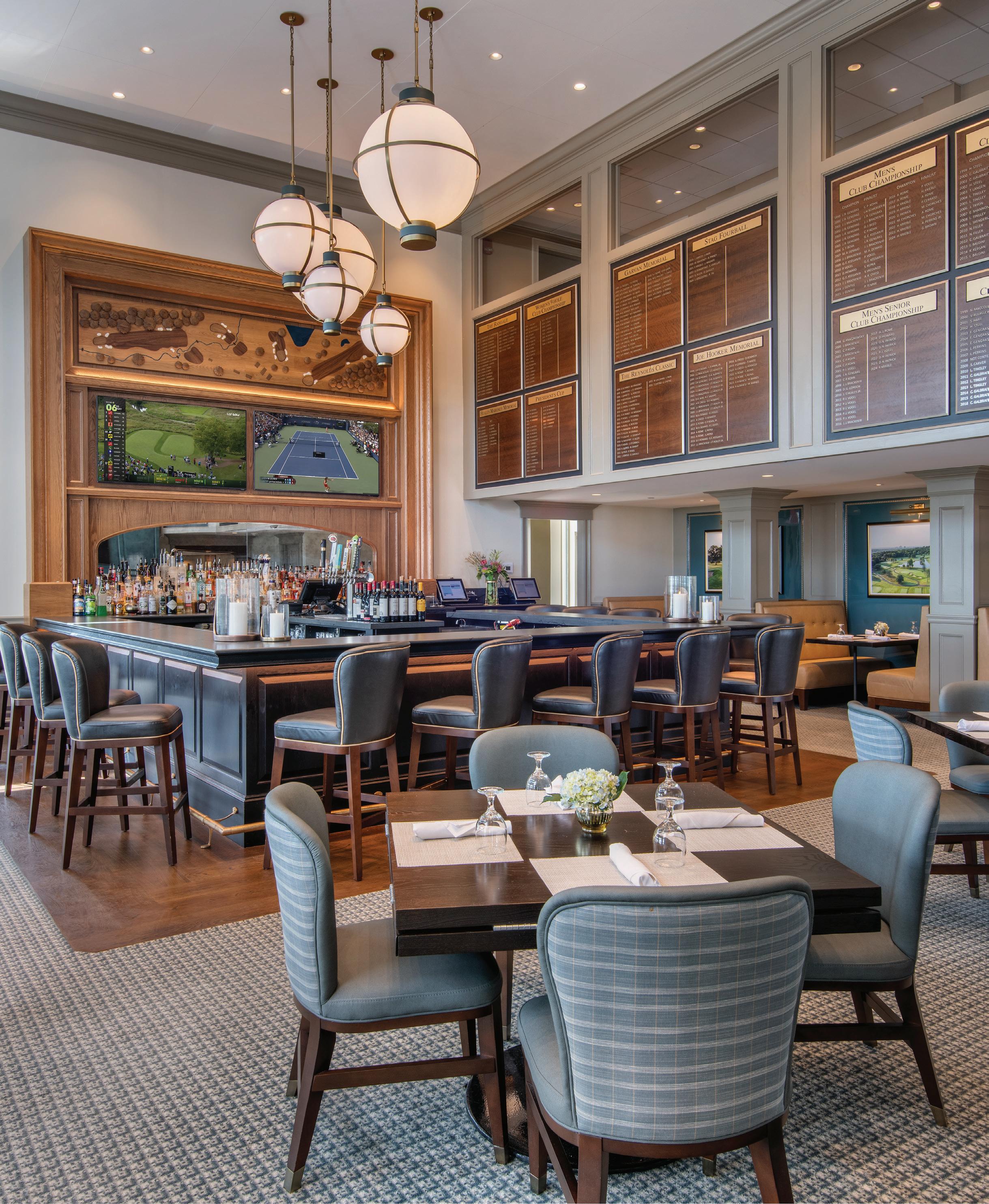



vehicles), along with 40 spots for push carts. Maximizing cart occupancy was a key driver in the design’s implementation. Capps recalls a potential dilemma during a men’s member-guest event that required borrowing 12 extra carts from local clubs. “We had to park a few utility vehicles outside and could barely close the doors once the fleet was parked inside,” he says. “We could never have parked an additional 12 vehicles inside; there was literally no ground space left once the fleet was parked in the old barn.”
A major notable enhancement of the new barn is a dual-wash bay with two garage doors. This well-stocked area includes two pressurized water hoses for spraying down carts, an ice machine for cart coolers, materials carts for stocking golf carts, compressed air for cleaning and
filling tires, and other supplies. Because the dual bay is outfitted with overhead heaters, golf staff can work comfortably in colder weather. The layout also allows for a more efficient set-up, with quicker pull-outs in the mornings, as well as during shotguns and inclement weather. “On a normal day,” notes Capps, “it allows for an entrance and an exit, helping with flow.”
Charging golf carts has been simplified by the installation of overhead outlets with hanging mounts. Additional wall outlets in the push cart area provide the necessary power for the club’s four autonomous caddie units. “We worked closely with our MEP [engineer] on the project to ensure the electrical delivery was more than adequate for our needs, given all the lithium-ion batteries we store and change on a daily basis,” adds Capps.
Since the cart barn’s opening, golf operations have improved across the board. Storage is more efficient, safer and staff-friendly, and the club can now house all carts on the premises without incident. Member bag storage has also been streamlined; what was previously divided into three areas has been consolidated, fully secured and climate-controlled. And with all storage racks now on rollers, storage capacity is notably enhanced.
Behind-the-scenes improvements at Hallbrook have ultimately benefited the golf staff, but Capps notes that members reap the rewards as well. “Our staff is more productive, have a nicer space to work out of, and have become more efficient,” he says, “making it easier for us to take care of the membership and their property.” C+RB
EUSTISCHAIR.COM

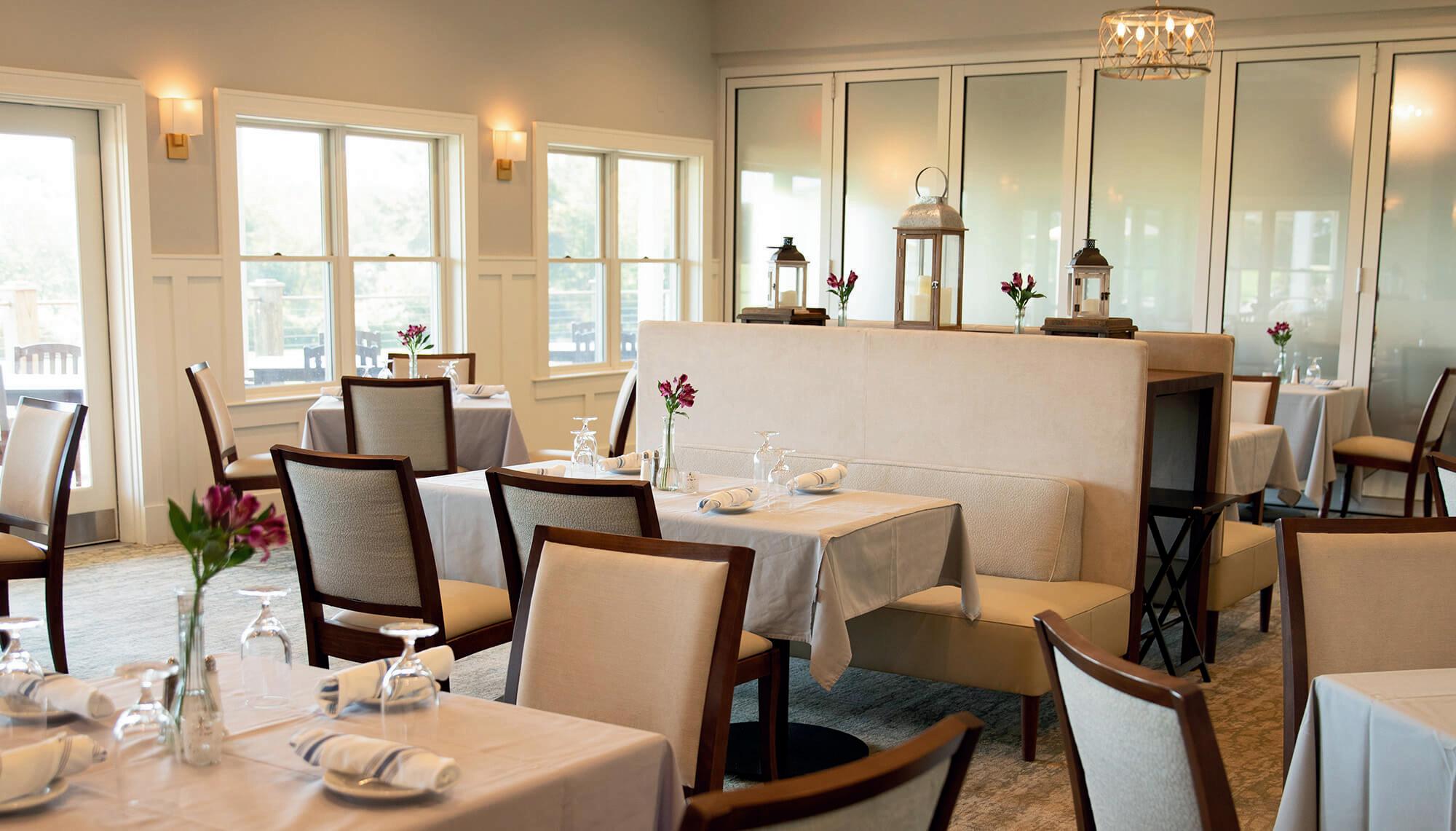



Smoke, Fire, and Finesse
Open-flame cooking is giving club and resort chefs new ways to showcase craft, engage members, and energize events.
By Isabelle Gustafson • Senior Editor
FROM WHOLE LAMBS SLOW-ROASTING
on a spit to beets buried in embers, club chefs are embracing live-fire cooking— not just as a technique, but as a full sensory experience that’s equally exciting for members and staff.
At The Stanwich Club, Executive Chef Corey Chow takes inspiration from Chef Francis Mallmann, “the godfather of open-flame cooking,” as well as a few of his favorite restaurants: Campfire in Carlsbad, Calif., and The Place Restaurant in Guilford, Conn.
“It’s all outside,” Chow says of The Place. “There’s a row of cinder blocks, with different levels of grills, and they cook simple things: lobster, shrimp, steaks, fish,” Chow says. “Their clams are the best clams I’ve ever had in my life. So I thought, ‘how do we incorporate this type of cooking, from something simple to something refined?’”
The answer: a custom-made setup Chow and his team now call “The Thunderdome.”
“It’s very dramatic,” says Chow. “It’s 10 feet wide by 15 feet high. There are three different levels. There are chains everywhere that are hanging with racks that you cook on. It’s a good conversation piece, it’s a great way to show different styles of cooking, and it’s fun for us, too.”
The Thunderdome makes an appearance a few times a year, usually for a member-guest weekend. The team carves out a section next to the 18th hole,
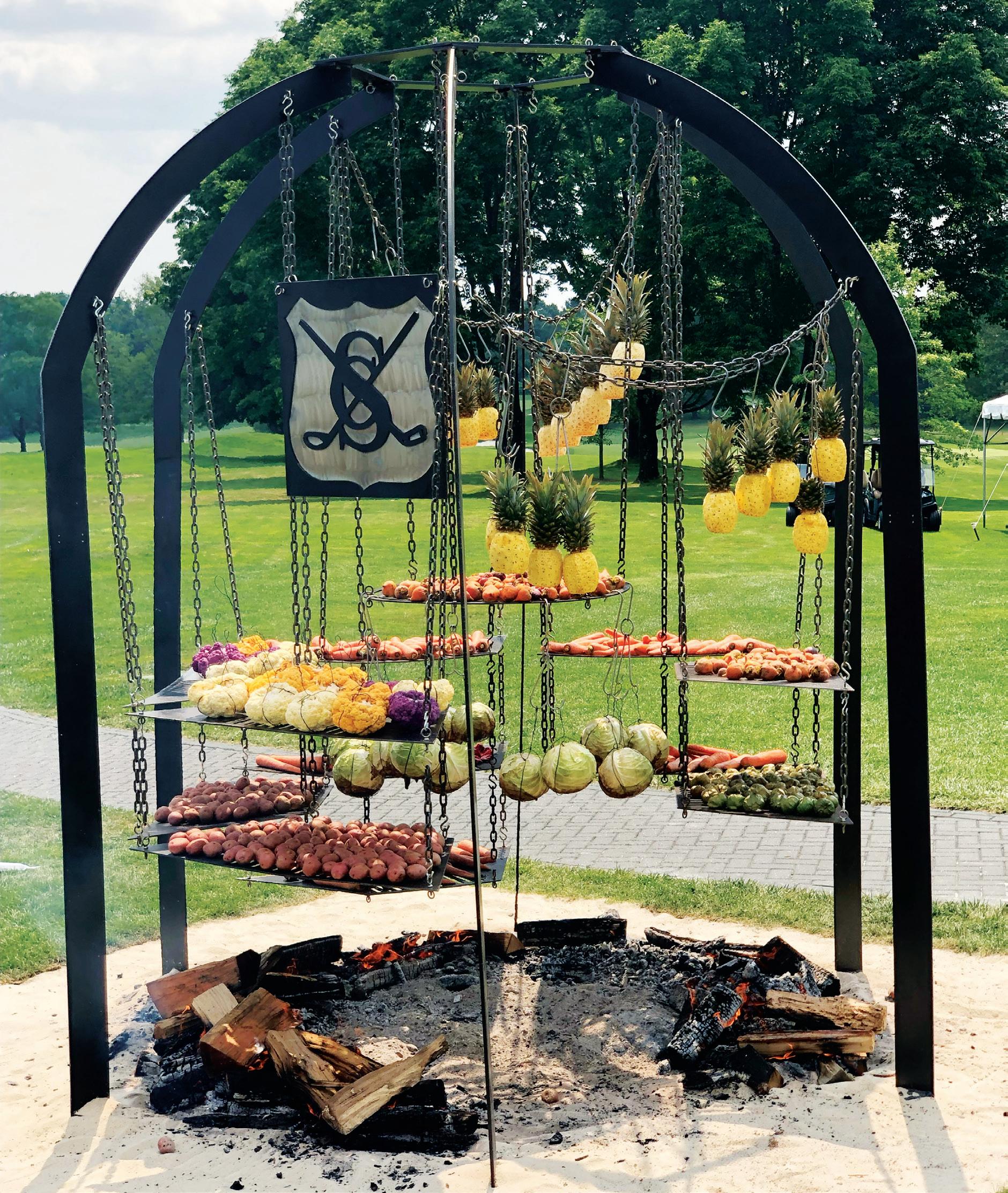
The Stanwich Club’s team employs its outdoor grill, custom-made in Texas and nicknamed “The Thunderdome” a few times a year, typically for a member-guest weekend.
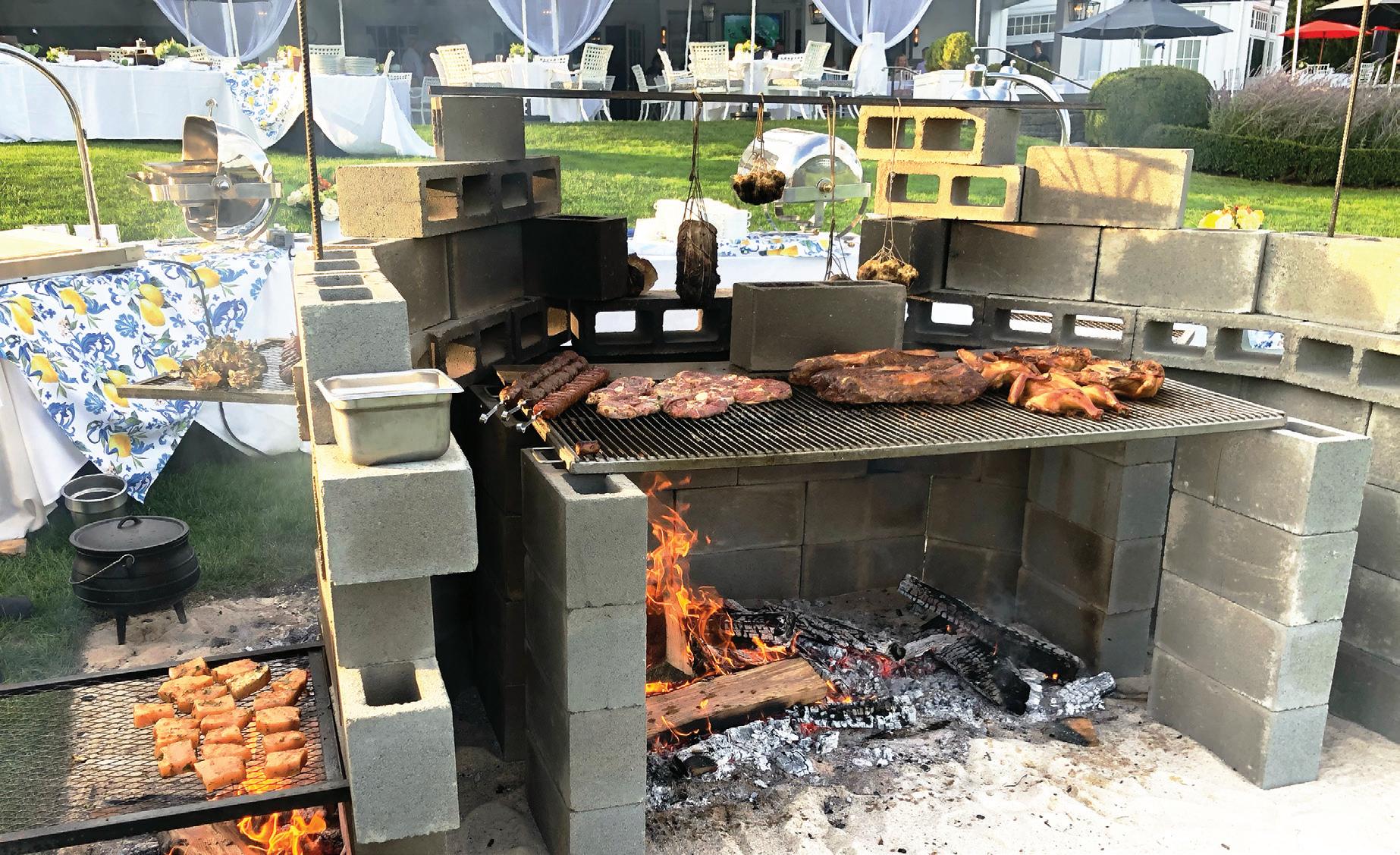
lays down sand, and builds the structure.
“It’s a lot of work just to set it up, and the breakdown’s even worse; it’s dirty, and there’s ashes everywhere. But it’s a very big crowd-pleaser. And [the grounds team] makes it look like nothing happened.”
“We’ll start pre-cooking the day before with vegetables, and the day of, we’ll start the fire around 12 o’clock,” Chow adds. “All day long, the smoke is blowing all over the course. It’s a beautiful scene. But it’s not smoke and mirrors; we cook a buffet—everything on that buffet has been on the grill, cooked open-fire.”
Chow’s early culinary experience was wood-fired, and it still informs his perspective.
“To me, cooking a great protein—a perfect piece of fish or steak—that’s easy. All you have to do is execute,” says Chow. “But to take a normal red beet and make it even more dynamic—that’s harder for me. Vegetables are much more challenging, and that makes it more fun.”
That philosophy shapes the Thunderdome’s offerings, and members are eager to try it all, from charred beets to roasted cabbage and carrots.
“We did an awesome street corn station,” recalls Chow, “where the corn is just roasting on the grill, and then we dip it in butter, cotija cheese, and [spices].”
While live-fire cooking has trended in restaurants for years, Chow sees greater potential in the club space.
“It doesn’t have to be something crazy,” he says. “It could be a four-foot cinder block grill. … You can take it in a lot of different directions, but I think it’s great for the experience. And with
clubs, that’s what you want; you want the membership to have that experience and for them to show off to their guests.”
IGNITING INTEREST AT FARMINGTON COUNTRY CLUB
At Farmington Country Club in Virginia, Executive Chef Michael Matarazzo runs two smokers: one indoors and one on a trailer for outdoor events.
“We do a lot of barbecue here,” notes Matarazzo. Last year, the club hosted a Southern-style, open-pit barbecue theme night that exceeded expectations.
“That was hugely popular,” he says. “To the point now where we’re contemplating whether we should have a regular, permanent, supplemental menu to our full menu at the grill that features a weekly rotation of barbecue items.”
Among the top dishes is the club’s
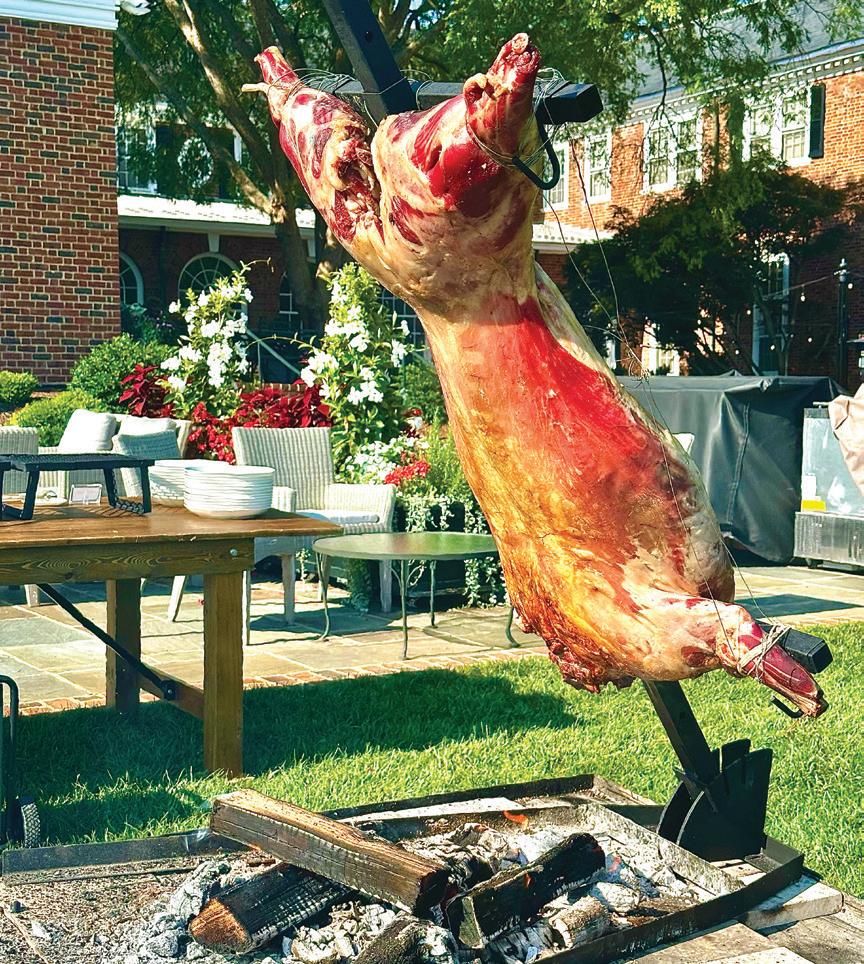
pastrami short rib.
“We brine the rib for 72 hours, then we put the pastrami rub on it and smoke that in-house,” Matarazzo says.
There are some operational considerations, he notes.
“Take into account the staffing you have and the time you have to put into it,” Matarazzo advises. “You could get super curious about barbecue and smoking and say, ‘I don’t want any digital controls,’ but that also requires somebody tending to the fire constantly. … For efficiency, for operations like we run, for smoking, I would go with something that has thermostatic controls.”
Members’ growing interest in barbecue and other styles of cooking led to the launch of a live-fire class.
“Usually, we start cooking pretty early in the day, especially if we’re doing whole animals,” Matarazzo says. “Throughout the course of the day, there were a lot of members coming to us and asking about what we’re doing and how they could learn how to do it. There’s a whole lot of interest in this style of cooking. That’s how the class was born.”
About 35 members attended the first session, which combined education, demonstration, and lunch.
“I had a whole lamb on a cross over a fire,” Matarazzo says, “and we had open pit barbecue chicken, whole sides of salmon over fire. It was really exciting for

At The Stanwich Club, Executive Chef Corey Chow takes inspiration from Chef Francis Mallmann, “the godfather of open-flame cooking,” as well as a few of his favorite restaurants: Campfire in Carlsbad, Calif., and The Place Restaurant in Guilford, Conn.
At Farmington CC, members’ growing interest in barbecue and other styles of cooking led to the launch of a live fire class. About 35 members attended the first session, which combined education, demonstration, and lunch.
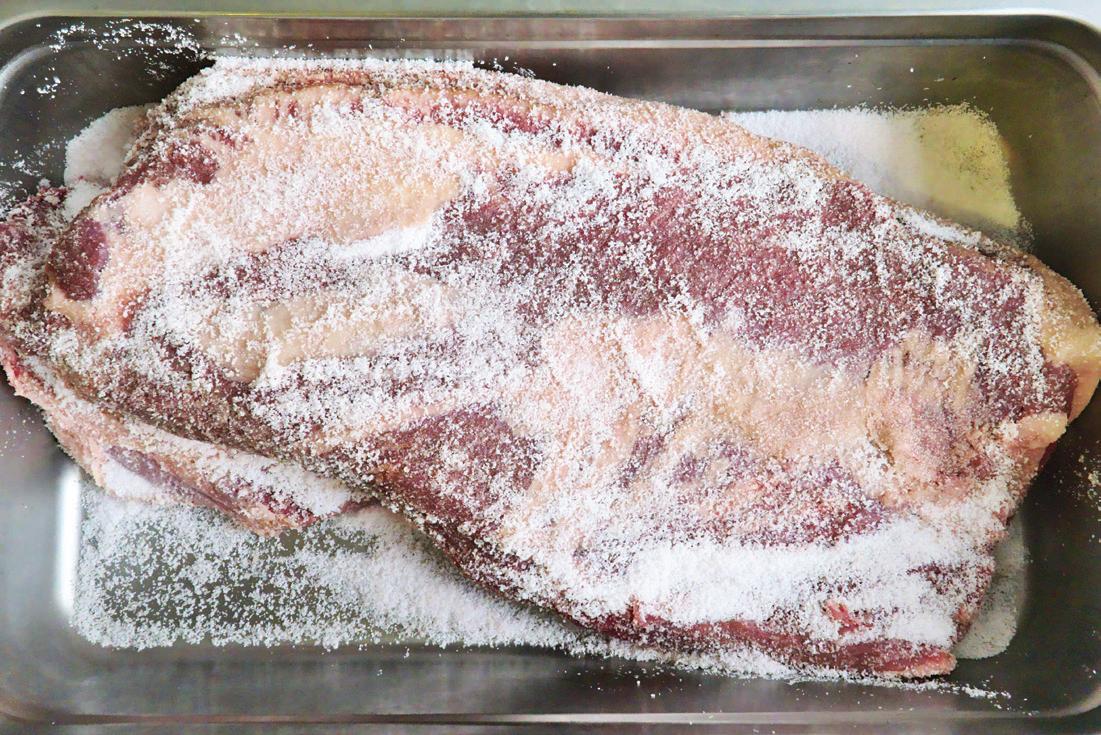
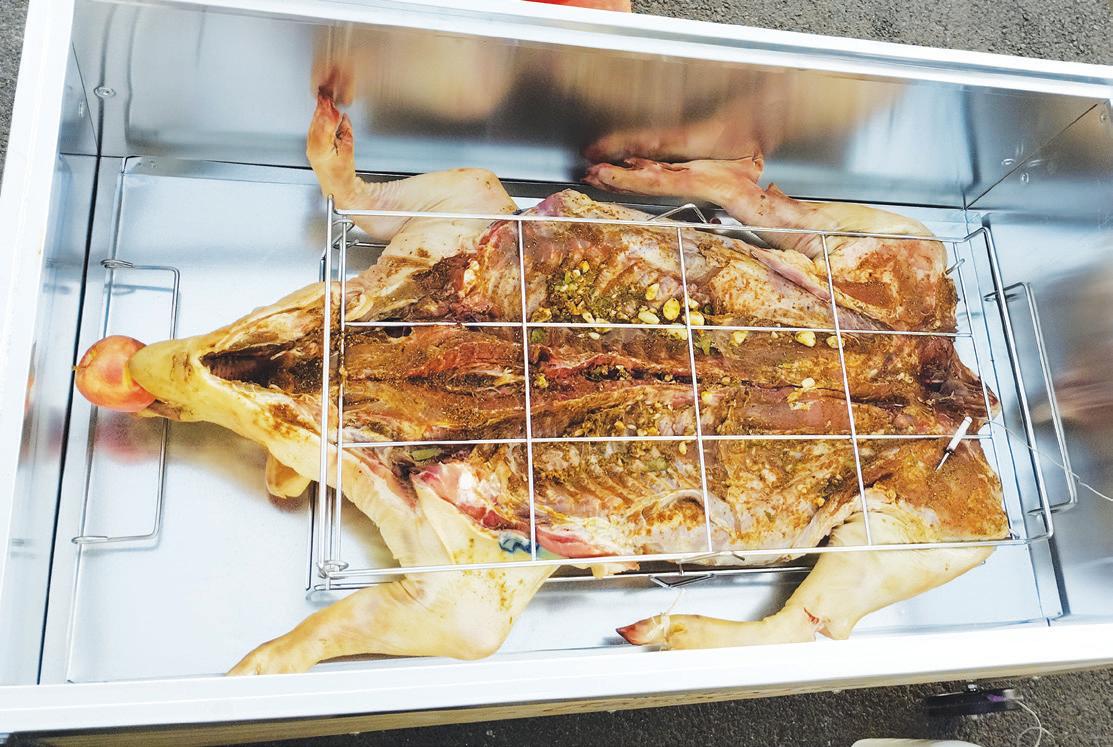
the members to see, and the response was incredible.” Feedback from members only highlighted the need for more plantbased options, which have since become a staple.
“We’ve done whole beets, where we put them directly into the embers. … We’ve done pineapples that are peeled and hanging over the fire. Fire-roasted grapes are shockingly delicious; the texture inside is surprisingly similar to apple pie filling.”
These demonstrations have also become valuable internal training tools. There are two main learning curves, Matarazzo notes.
“One, understanding how fire works and understanding that fire has a life of its own,” he says. “Cooking one thing once over live fire successfully doesn’t necessarily mean you can copy that formula the next time. The other thing is, when you grill in a backyard, you put meat on the grill, and you expect to hear that sizzle, and to have some flames. But not every style of live-fire cooking is supposed to have those effects.”
Farmington’s setup may appear elaborate, but it began simply.
“We started with equipment that you would take camping with you,” he says. “You don’t have to wait until you have a big budget to start live-fire cooking. You just have to be creative and think outside of the box.”
At a golf club, though, there’s a major factor to consider: the grass.
“Make sure that you have a plan for preventing damage,” advises Matarazzo. “Work closely with the grounds team.”
Farmington’s team built a custom, fireproof pallet lined with bricks and stones, creating a realistic-looking fire pit without damaging turf.
“When people come up and see a Dutch oven on a tripod with collard greens over this campfire, it looks like we built a campfire on the grass,” Matarazzo says. “But when the event is over, we remove all that, and the grass is as green as it was before.”
ELEVATING EVENTS AT EAGLEWOOD GOLF COURSE
At Eaglewood Golf Course and Event Center in North Salt Lake, Utah, Executive Chef and Kitchen Manager Justin Field brings a background in sausage-making and charcuterie to his culinary program.
“I had just gotten out of college,” Field recalls. “I was bumming it on my grandfather’s couch in Astoria, New York, and he gave me an ultimatum. He said, ‘You can stay here, but you have to get a job.’ … That’s how it started.”
Field would revive the skills he picked up at Joe’s Pork Store later, opening a brewery in Salt Lake City that featured sausage and barbecue—techniques he’s now brought to Eaglewood.
In fact, when he was hired, Field requested a custom smoker to support the club’s heavy tournament and event schedule.
“Given the amount of tournaments we were expecting, I wanted to get as much food out of my convection oven and into the smoker as possible. … We don’t have a huge kitchen, so we have to be a little efficient on spacing.”
Eaglewood Golf Course and Event Center
Executive Chef and Kitchen Manager Justin Field has a passion for barbecue and wholeanimal cooking. He treats salting as a separate process from the rub and enjoys experimenting with various techniques.
That investment has paid off. From 16-hour briskets to smoked chicken wings, the smoker is central to Field’s output. But he encourages chefs to experiment before committing to expensive equipment.
“Take a few weekends, smoke a whole bunch of ribs, try out different rubs, sauces, techniques, and just play around with it until you really get dialed in to where you want to go,” he says.
No matter the protein or vegetable, Field stresses the importance of intuition in cooking.
“This applies to a lot of cooking in general, but I think a lot of people don’t realize that they’re as much of a part of the cooking process as the recipe,” he says. “We have to constantly be checking what we’re doing and adjusting as we go. It’s not just the recipe.”
This becomes especially relevant when it comes to Field’s passion for wholeanimal cooking. And as an avid hunter, he has a particular appreciation for all facets of the craft.
“A lot of people, especially in Utah, are a little intimidated by the whole animal,” says Field. “But I love it. I think the flavor is a lot better, and I’m getting a more intimate product from a local producer.”
Field often opts for Cuban-style whole pig roasts, pairing them with mole, fried plantains, and black beans.
“Any way I can work with the whole animal, I really take the effort to—if it’s a duck, a chicken, as big of cuts as I can get,” he says. “You save a lot of money doing it that way, too, at the expense of time. But if you enjoy doing it, I don’t see it as a waste of time.” C+RC
Colorado
Springs • MARCH 8-10, 2026

EARLY-BIRD RATE: $2,950 (through 1/15/26)
REGULAR RATE: $3,200 (after Early Bird; late registration rates may apply)
ROOM BLOCK: $299* per night plus tax is available at The Broadmoor
*Attendees can book at the group rate at cheftochefconference.com/book-hotel
REGISTRATION INCLUDES:
• Kickoff party at The Broadmoor, one of the country’s most iconic resorts
• Exclusive kitchen and property tours of The Broadmoor’s legacy-driven culinary program
• Breakfasts, lunches, and breaks curated with chefs in mind
• General sessions and live cooking demos led by the industry’s top talent
• The reimagined Club + Resort Chef of the Year Culinary Competition
• 40 Under 40 Cocktail Party recognizing the next generation of chefs
• C+RC Hall of Fame Induction Reception celebrating industry leaders
• Built-in networking at every turn, with hundreds of peers who understand the club world
• Access to the expanded sponsor hall with partners showcasing products and services tailored to club and resort culinary operations
• Continuing education credits through CRCA, ACF, and CMAA


The Rise of the Culinary-Somm
More club chefs are finding value in wine education.
By Joanna DeChellis • Editorial Director
WHEN PEDRO SANCHEZ , CEC, CCA, WSET III, first opened a bottle of French wine for a club dinner, he felt more frustrated than inspired. The label offered no mention of grape variety, only the region. Unless he already knew which grapes grew there, it was a guessing game. That moment lit a spark. Sanchez, Executive Chef of BraeBurn Country Club in Houston, bought a sommelier prep book the same day. Soon he was hooked, diving into formal wine education and eventu-
ally earning WSET Level III certification.
“It started with curiosity,” he says. “I wanted to make sense of it. That curiosity turned into a passion.”
For Sanchez, the pursuit of wine knowledge has had a direct and immediate impact on his work as a club chef. He describes two benefits above all: confidence and connection.
“As I’ve learned more, I feel more confident leading my team and sharing that knowledge with them,” he says.
Chef Pedro Sanchez’s GUIDE TO Building Wine Knowledge:
START WITH A BASELINE
“I highly recommend every chef pursue WSET Level 2. It gives you enough knowledge to create better pairings and understand wine more deeply. At this level, you can do most of the coursework online, completely at your own pace.”
TASTE BEFORE YOU PAIR
“One of the biggest takeaways is how much vineyard location, even within the same region, can change a wine. Site matters, and tasting is non-negotiable.”
THINK LIKE A CHEF, NOT A SOMMELIER
“We tend to see wine as another ingredient, something that actually touches the dish. That lets us reverse-engineer a dish to complement a specific wine, or build a pairing from both sides at once.”
BUILD CREATIVE TRUST
“It feels like more of a creative partnership now, where we’re all bringing ideas to the table and working together to give the members the best experience possible.”
PREPARE FOR HIGHER STANDARDS
“Over time, this kind of knowledge will become something clubs actively look for in their chefs. It will be seen as part of the standard skill set, not just a bonus.”
“It’s made me a better mentor, and it’s brought me closer to members. Sometimes they’ll stop me to talk about a wine they tried or invite me over to taste a special bottle. Those interactions make the experience more personal.”
Wine education has also sharpened his palate. He is now more precise about balancing acid, fat, and texture in dishes, and he passes that precision along to cooks and sous chefs.
“A well-balanced dish feels elegant, and while that takes time to master, my hope is to help them get there quicker,” he says. Training around food pairings has become part of how Sanchez develops his team, and while most of his energy has gone into his own coursework, he plans to bring the staff into the wine side of the conversation once he completes his certifications.
At BraeBurn, this knowledge has also strengthened collaboration between the kitchen and the beverage team.
“There’s a lot more trust now,” Sanchez says. “It feels like more of a creative partnership, where we’re all bringing ideas to the table and working together to give the members the best experience possible.”
He believes chefs bring a distinct perspective to wine because they see it as an ingredient.
“Instead of just finding a match, we think about how the wine interacts with the food on a deeper level. That lets us
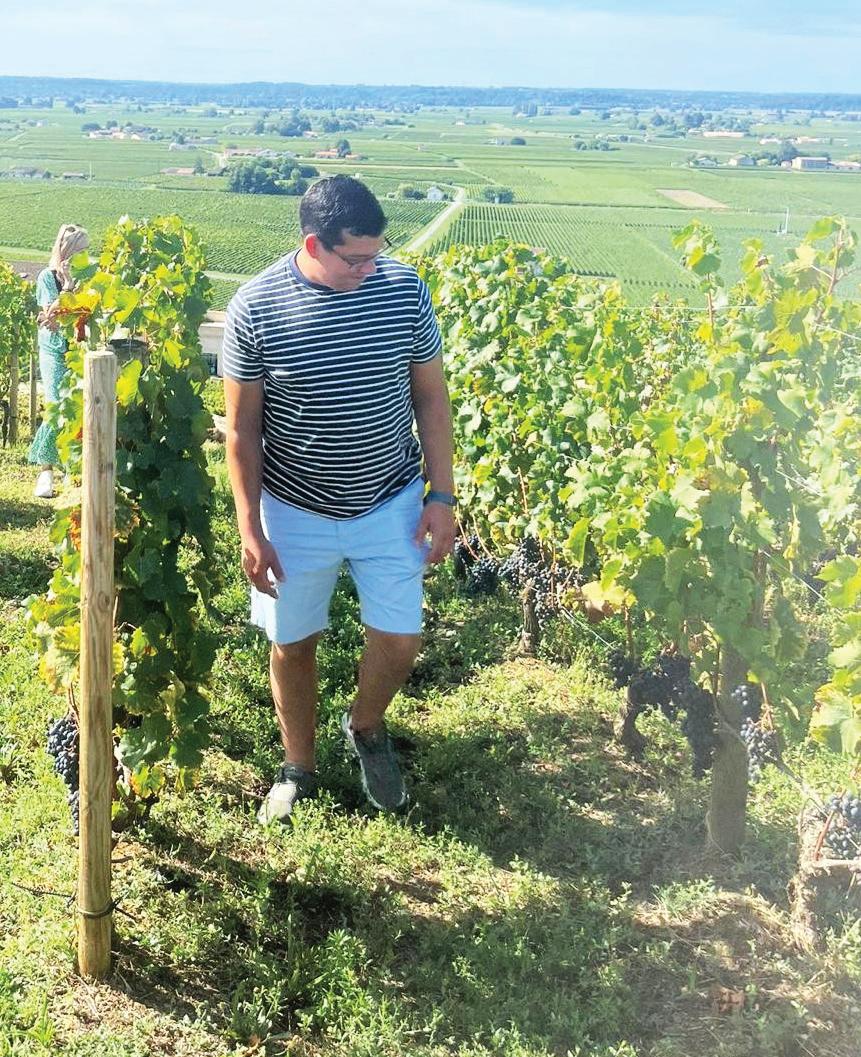
reverse-engineer a dish to complement a specific wine, or build a pairing from both sides at once,” he explains. For Sanchez, that approach transforms wine from a side note to a central part of the dining experience.
This is why he recommends every chef pursue at least WSET Level II, which can be completed online with flexible pacing. In his view, clubs will eventually see formal wine knowledge as part of the standard skill set for chefs.
“We control everything that touches the plate, so why wouldn’t you want to influence what the guest is drinking alongside their meal?” he says. “Wine isn’t just a side note. It can elevate or completely throw off the whole experience.”
Although he once swore he was finished with classes, Sanchez has decided to continue his studies and pursue the WSET Diploma.
“At this point, I already have more than enough wine knowledge for culinary purposes, but wine has become a true passion,” he says. “The more you learn, the more curious you become. For me, this is a personal challenge, but I also hope to use what I’ve learned to mentor others and help bring more wine education into the culinary world.” C+RC
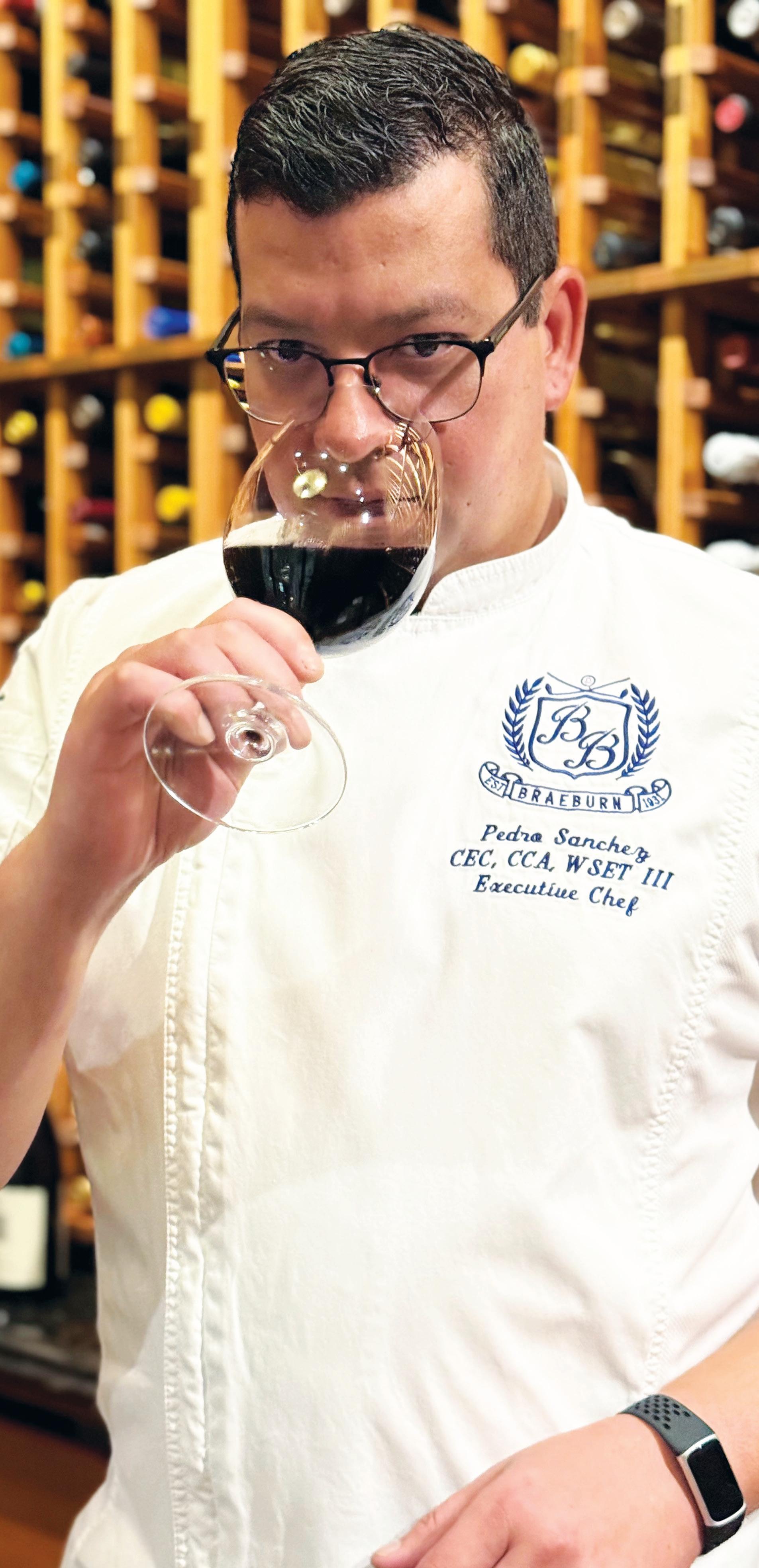
For Pedro Sanchez, Executive Chef of BraeBurn CC, the pursuit of wine knowledge has had a direct impact on his work as a club chef.
Chefs Provide a Personal Touch with Custom Menus
Catering programs focus on creativity and originality as banquet kitchens build out special event menus.
By Pamela Brill • Contributing Editor
CUSTOM CONTENT isn’t just marketing parlance. In the kitchen, it signifies a growing movement toward personalization in which chefs are designing event menus that reflect individual tastes and flavor profiles. Whether preparing an intimate gathering for a member outing or a themed multicourse event complete with food and beverage pairings, culinary professionals are embracing the opportunity to showcase their talents while developing new concepts.
SAY CHEESE
If there’s one food that’s a staple in every Wisconsin-based kitchen, it’s fresh cheese. However, finding innovative ways to bring America’s Dairyland to the table requires a novel approach. For Executive Chef Nico Rossi at Lake Lawn Resort in Delavan, Wisc., that means producing unconventional dishes without upstaging the signature ingredient.
“In Wisconsin, cheese is king, and the more items we can cover with cheese, the happier the guests are,” says Rossi. He and his team have created a mac and cheese station, outfitted with a number of creamy bases, including mornay, Spotted Cow five-year aged cheddar, smoked cheddar and chipotle Munster.
Further enhancing this cheesy favorite, guests can choose from among 20 different toppings, ranging from lobster and steak to bacon and fresh vegetables. Smoked sauces and seafood tend to be the guests’ favorites, as are their interactions with culinary team members manning the station.
“Each chef brings a unique approach to open cooking methods with their flair and their banter with the guests,” adds Rossi. “Guests are left with a new experience during their stay with us.”
Cheese also played a starring role during a recent event in which Rossi and his crew designed special menus for the
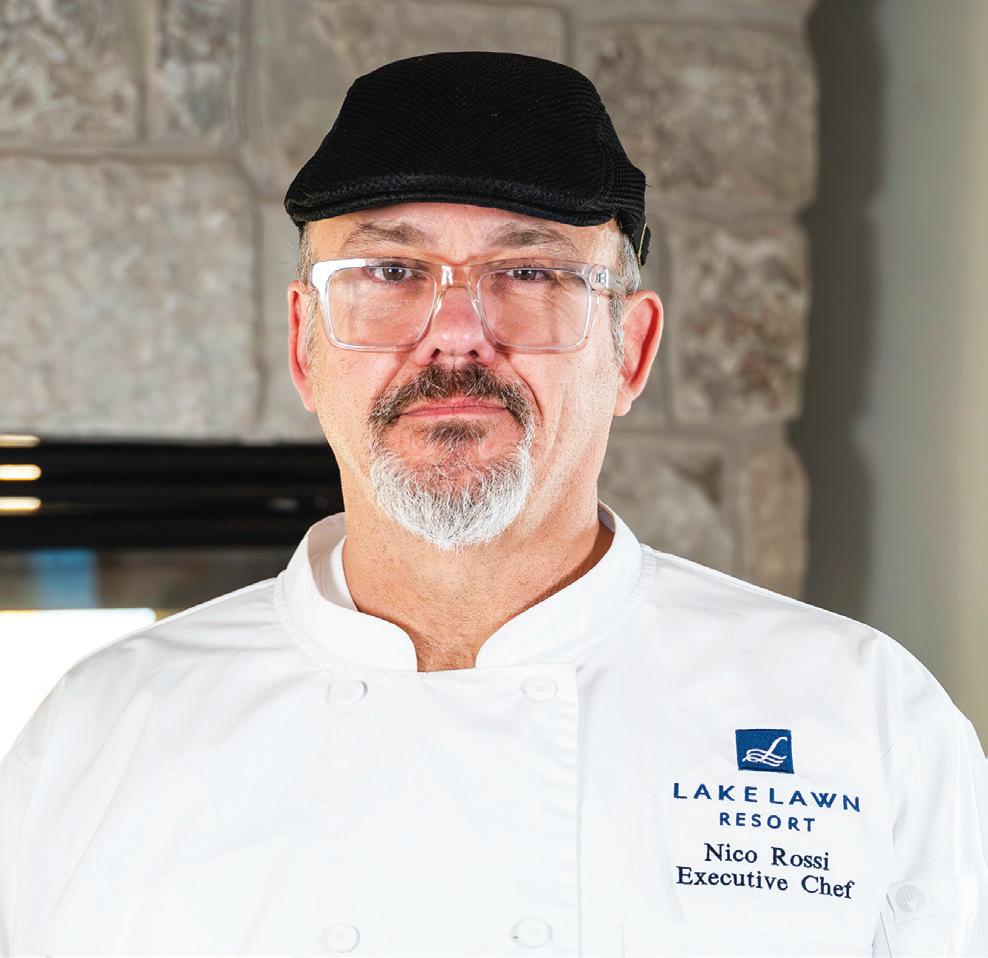
Executive Chef Nico Rossi of Wisconsinbased Lake Lawn Resort finds new ways to incorporate classic favorites, such as an interactive mac and cheese station complete with cheeses, toppings, and sauces for members to customize meals.
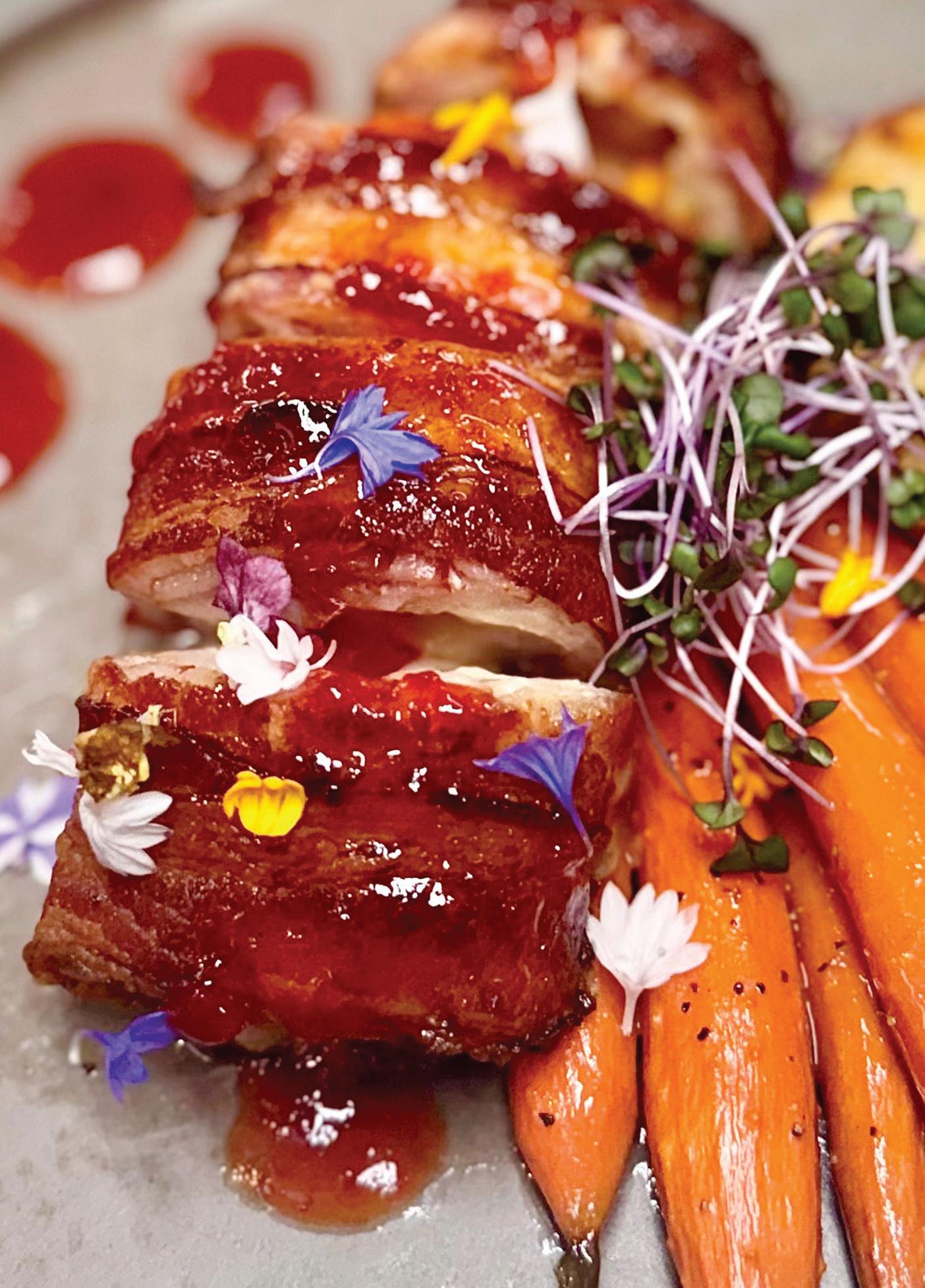
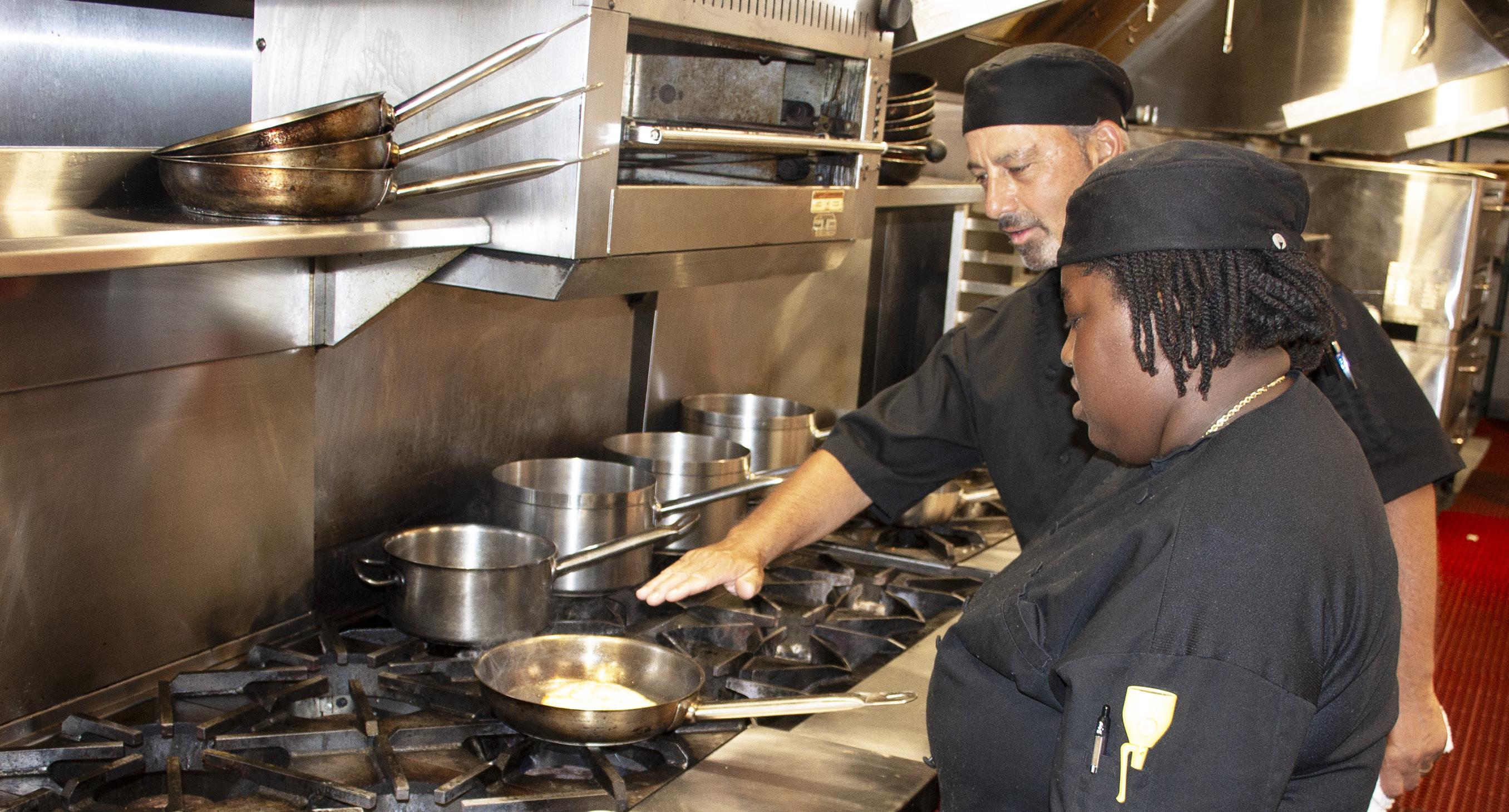
Swiss tourism board. Showcasing the country’s wines, artisanal meats and cheeses, as well as national dishes, the goal was to create a culinary adventure enabling guests to feel as though they had been transported to a European getaway.
It’s events like these that keep Lake Lawn Resort’s newly minted Executive Chef nimble and ready to experiment.
“Being a student of my craft, these events challenge us professionally to grow and be better,” explains Rossi. “Learning is a never-ending process.”
This fall marks Rossi’s first full year at Lake Lawn, where he heads up the resort’s fine dining restaurant, 1878 on the Lake. Since his start, Rossi has seen a shift toward more custom approaches for a broader range of dishes.
“People are choosing to be creative and have unique experiences with their food choices,” he notes. His previous stints preparing banquets at other high-end resorts, including Four Winds Casinos, Little Palm Island and Grass Flats’ Rhum House (over the course of 24 years), have enabled Rossi to develop an eye for what will best appeal to guests.
Down at the Hut, Lake Lawn’s seasonal marina bar, the menu, comprised largely of bratwursts and burgers, was overdue for a refresh. Rossi and his team debuted a fuller roster of street food items for Fourth of July weekend—featuring tacos, a Mexican shrimp cocktail, elote street corn, chips, and guacamole—to overwhelming success.
“We are looking to grow this concept on the lakefront,” says Rossi, “adding desserts and Asian-themed taco specials to weekly menus that will keep things fresh and build a following.”
Looking ahead, Rossi is confident that his kitchen will be able to produce custom menu items that fulfill the resort’s standards
of excellence, with his devoted culinary staff by his side. “When you put a group of professional chefs together, grand ideas flow, as does the wine,” he says. “The food ideas come naturally to us, as we live to eat.”
STRENGTH IN NUMBERS
When crafting new culinary concepts, it’s helpful to cull input from multiple sources, and it’s especially convenient when those connections are in-house. Executive Chef James Pampinella at The Oaks Club in Osprey, Fla., utilizes a treasure trove of resourceful personnel in his busy kitchen, as well as input from club management.
“I am a firm believer that a chef is only as good as their current team’s ability,” he explains. “Tapping into the team’s ethnic backgrounds and culinary talents, and allowing them to own stations, brings forth new flavors and options.”
Not only does Pampinella rely upon their collective input to inspire new dishes, but to grow in his own role as lead chef. (He has spent the past 12 years at The Oaks Club, preceded by stints at Interlachen Country Club, John’s Island Country Club and Highlands Country Club.) Planning and preparing banquet menus over the past decade has shown him that club culinary events are becoming more personalized by the minute.
“I believe this shift is coming from the competitive dining landscape and what our members are seeing at other clubs that they belong to, their friends, and social media,” he says.
The Oaks Club as a whole uses insight from its house and social committee meetings, which divulge what members are discussing in terms of dining and dieting trends. Topping the list are healthy eating, vegan menus, and gluten-free dishes, while leaving room for less restrictive dining options.
At The Oaks Club, Executive Chef James Pampinella works alongside staff to strategize banquet menu concepts, allowing guests to broaden their cultural horizons through their palates. Recent action stations have featured custom, handmade sushi and poke bowls made to order.
At The Oaks Club, a tiered deviled egg display greeted members and guests to a grand Easter buffet, featuring various flavors of the classic, festive appetizer.
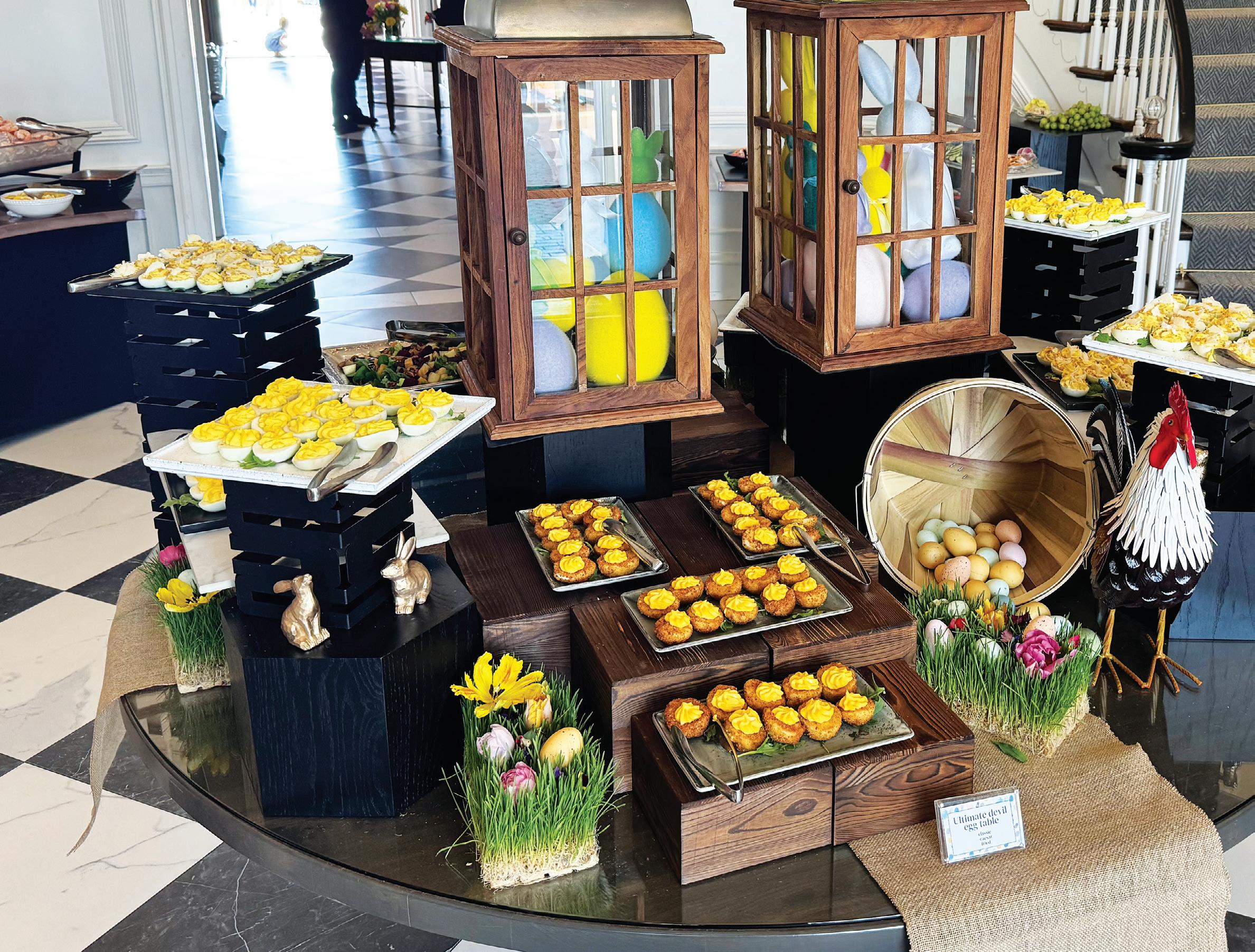
Personalization came into play this past spring when Pampinella joined forces with Assistant General Manager Cory Saffran to develop some novel concepts. For an Easter buffet, the two designed a tiered deviled egg display, outfitted with decorative elements. The festive vignette doubled as a focal point for members and their guests upon arrival and enticed them to sample a traditional holiday appetizer in multiple flavors.
This past summer, Saffran took the lead on Bites & Flights, a progressive dining event with an escape-room-style component. Members were invited to move about the club, where they sampled different food and beverage pairings at each stop.
“Along the way,” explains Saffran, “they will have to answer questions to figure out the next location and remember a number that will unlock a box at the end with a small giveaway of custom, engraved-wood coasters.”
Menu highlights included chicken and waffles; mushroom, garlic, and lemon cream ravioli; and crab cakes served with three mini cocktails (on the restaurant terrace); caprese skewers with balsamic pipette and summer rolls paired with a trio of white wines; Oaks Club wedge salad and surf and turf (chateaubriand and poached lobster) served with red wine; and finally, a dessert trio and three mini dessert cocktails (on the ballroom balcony).
A true all-hands-on-deck approach, the club’s maintenance team constructed a tasting spoon wall for presenting the first course of small bites.
Pampinella’s BOH staff also helps strategize banquet menu concepts, allowing guests to broaden their cultural horizons through their palates. Recent action stations have featured custom, handmade sushi and poke bowls made to order. “We first choose the focal point of a new dish and then build a foundation of flavor affinities to support it,” he explains.
“It takes the whole team to raise the bar,” Pampinella adds, “and bouncing ideas off of each other to create new and exciting offerings is a great recipe for success.” C+RB

Building a Racquet Sports Powerhouse at DC Ranch

David Moyer has spent 15 years transforming The Country Club at DC Ranch from a modest program with six courts and little activity into a thriving hub for tennis and pickleball with robust leagues, a growing junior program, and a reputation for developing top professionals.
By Joanna DeChellis • Editorial Director
DAVID MOYER HAS SPENT 15 YEARS transforming The Country Club at DC Ranch from a modest program with six courts and little activity into a thriving hub for tennis and pickleball with robust leagues, a growing junior program, and a reputation for developing top professionals.
When David Moyer arrived at The Country Club at DC Ranch in Scottsdale in 2011, the racquet sports program
barely existed. The club had six courts, two ladies’ league teams, about 10 juniors, and no dedicated amenities. There were no bathrooms, no pro shop, and lights on only four courts. Annual revenue hovered around $45,000.
“The program was basically nonexistent,” Moyer recalls. “At the beginning, I was everything. I managed reservations, set up courts, handled maintenance,
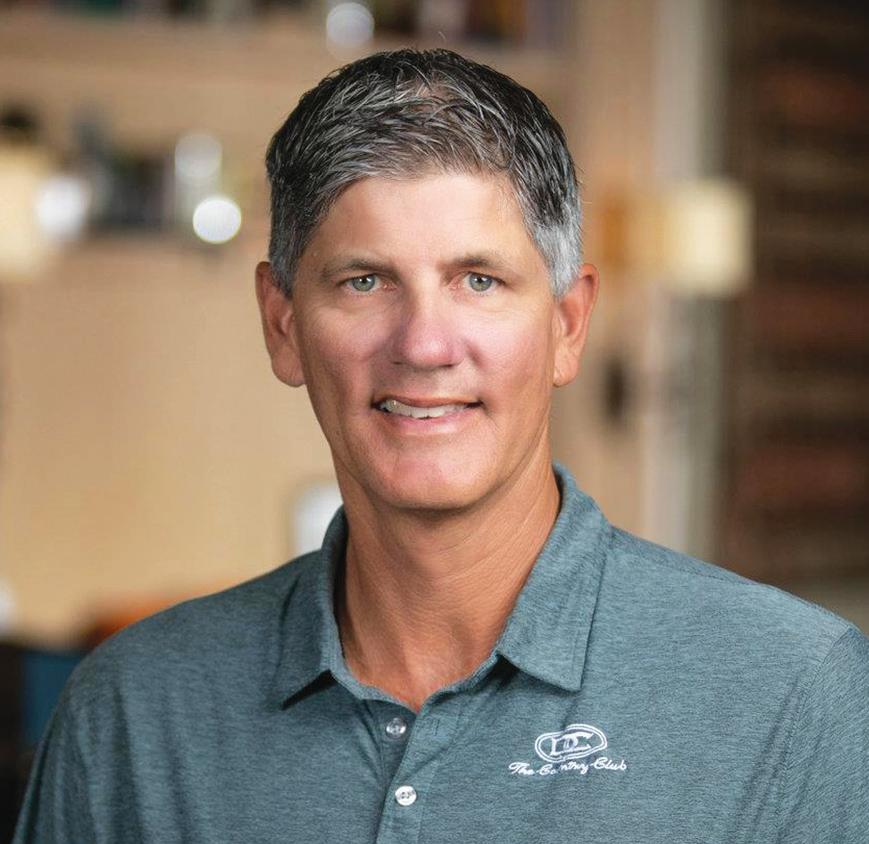
As Director of Racquet Sports at The Country Club at DC Ranch, David Moyer has spent the past 15 years transforming the Scottsdale, Ariz.-based club’s program.
even drove members in a shuttle if they needed to use the restroom.”
Fifteen years later, the scene is entirely different. As Director of Racquet Sports and an RSPA Master Professional, Moyer has built one of the region’s most dynamic programs. DC Ranch now has six lit tennis courts, four standalone pickleball courts opening this fall, a junior program with more than 65 players, and 10 competitive women’s league teams. A staff of five full-time certified professionals helps run the operation, which generates nearly $350,000 in annual revenue.
Much of that success, he says, comes down to creating a culture centered on family and fun. The junior program is the clearest example of this philosophy. Once an afterthought, it is now one of the club’s most popular offerings. The club’s Assistant Director of Racquet Sports, Gabo Galeffi, leads the program with energy and creativity, ensuring practices remain engaging even in the Arizona heat. “When kids enjoy themselves, they come back,” Moyer says. “That has been our approach all along. We want families to feel like this is their place.”
Adults have benefited from that same emphasis on programming. League play has grown from two teams to 10, fueled by creative scheduling and a focus on keeping members involved beyond lessons. “Programming is what makes people commit,” Moyer explains. “Lessons alone will not sustain a program.”
Facilities have grown in step with participation. Early improvements included a new pro shop with restrooms, additional lighting, and expanded member services. The most significant investment is the one currently underway: a $1 million project that will add four dedicated pickleball courts. Pickleball has been part of the
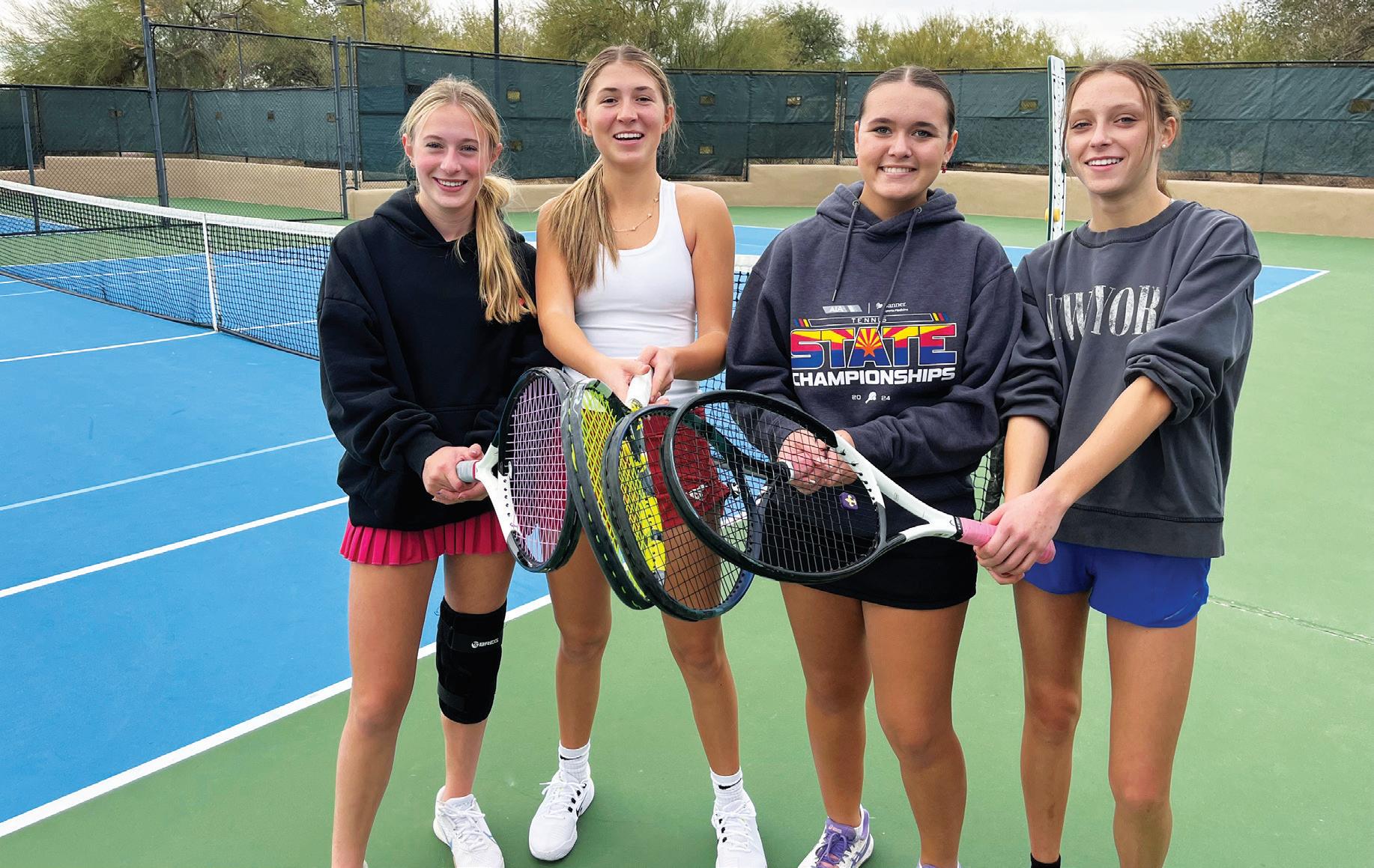
program for five years, but until now, tennis and pickleball players shared the same space. “It has been a labor of love,” Moyer says. “Now we can finally give pickleball its own home and the members the program they deserve.”
While facilities matter, Moyer believes the heart of a successful program lies in its people. He is passionate about mentoring professionals, building a culture of learning, and preparing staff to advance in their own careers.
“I look for four things when hiring: I want to see past success, passion for the game, cultural fit, and drive,” he says. “If a pro has those qualities, we can help them grow into whatever they want to be, whether that is head pro or director.” That reputation has made DC Ranch a destination for ambitious professionals. His last head pro, Ryan Shomo, became Director of Racquet Sports at Arizona Country Club, and his current Assistant Director was drawn to DC Ranch specifically for its reputation for developing staff.
Moyer also sets clear benchmarks for progress to ensure the program never stagnates. Every five years, he wants it to look different. “We cannot run the same socials, the same drills, with the courts looking the same. That is not progress,” he says.
With new pickleball courts about to debut and the possibility of adding padel
in the future, Moyer sees the next five years as another chance to innovate. “Tennis is growing, pickleball is not going away, and padel is coming. The future is integration—programs that bring these sports together under one umbrella.”
That vision extends to fitness, where juniors already incorporate strength and conditioning into their training. Adult players are beginning to explore tennis and pickleball-specific workouts, as the club’s fitness staff expands offerings tailored to racquet sports. “For juniors, it has become an essential part of development,” Moyer says.
He also credits the support of the club’s leadership. “Whenever I have gone to them, whether asking for a new pro, lights on more courts, or a pro shop, they have said yes,” he says. “That support has been tremendous.” The latest investment is not only in facilities but also in people. The club is in the process of hiring its first dedicated pickleball pro to ensure the new facility launches with momentum.
For Moyer, the ultimate goal remains simple: Deliver an experience members want to repeat. “Our job is to make sure that when a member leaves the courts, they say, ‘That was great. I cannot wait to come back,’” he says. “That is what this business is about. If we can make somebody’s day better, we have done our job.” C+RB
Led by Assistant Director of Racquet Sports Gabo Galeffi, DC Ranch’s junior racquets program is among the club’s most popular offerings.
Inside the Culture of 45 Holes at The Olympic Club
PGA Master Professional Matthew Jordan shows how communication, creativity, and hospitality shape one of the country’s most complex golf operations.
By Joanna DeChellis • Editorial Director
MATTHEW JORDAN, PGA Master Professional and Director of Golf at The Olympic Club in San Francisco, oversees one of the largest and most complex golf operations in the country. With 45 holes, more than a thousand golf members, and an active tournament schedule, he has learned that success depends on people, communication, and a focus on hospitality.
For Jordan, everything starts with the team. “I want my staff to have the same or better opportunities than I had as an assistant,” he says. “It is not just about golf. If someone in outside services wants to build a career outside the game, I want to help them do that.” By investing in education and networking for everyone on staff, he has built a culture of engagement that directly improves the member experience. Course renovations can present challenges, but Jordan views them as opportunities to refine communication. The Lake Course recently reopened after a Gil Hanse renovation, and work on the Ocean Course and practice facilities is scheduled next.
“The committee structure is critical because those groups set the guidelines on when members can play, when guests are allowed, and how to keep it fair,” he notes.
He uses technology to make the process seamless, connecting with reciprocal clubs and giving members direct access to available times. “That way, they are not emailing me or my head professional asking for a favor,” he explains. “They can see what is available, book it, and it becomes easy for everyone.”
Jordan’s day rarely follows a script, yet visibility is always a priority. “I park the car, say hello to outside services, stop in the shop, walk to the range, and talk with members before I ever get to my desk,” he says. “My door is always open. Some days I get pulled into budgets, other days I am listening to a member tell me their life story. Either way, I want them to know I am here and accessible.”
Tournaments at The Olympic Club are treated as experiences, not just competitions. The annual Jim Lucius Shootout, for example, now carries a logo that fea-


Matthew Jordan, PGA Master Professional and Director of Golf at The Olympic Club, believes in an open-door policy and sees accessibility as key to hospitality.
tures the red cart driven by the longtime Director of Golf. “It used to just say JLS on the schedule,” Jordan says. “Now it feels like an event that honors who Jim was and creates something special for the members.” From welcome signage at the entrance to turf-painted logos on the hillside, the details are designed to make players feel celebrated.

The Olympic Club’s golf operation features 45 holes, more than a thousand golf members, and an active tournament schedule. The Lake Course recently reopened after a Gil Hanse renovation, and work on the Ocean Course and practice facilities is scheduled next.
Hospitality extends to everyday touches as well. Jordan eliminated single-use plastic bottles and introduced reusable bottles branded with the club logo. “Members thanked us for making the change,” he says. “It showed we were thinking about the environment, and it made them proud of their club.”
Looking ahead, Jordan is mindful of sustaining the surge of interest in golf that came after COVID. “Our challenge is keeping people engaged,” he says. “That might mean a three-hole loop, a six-hole loop, or something creative on the prac-
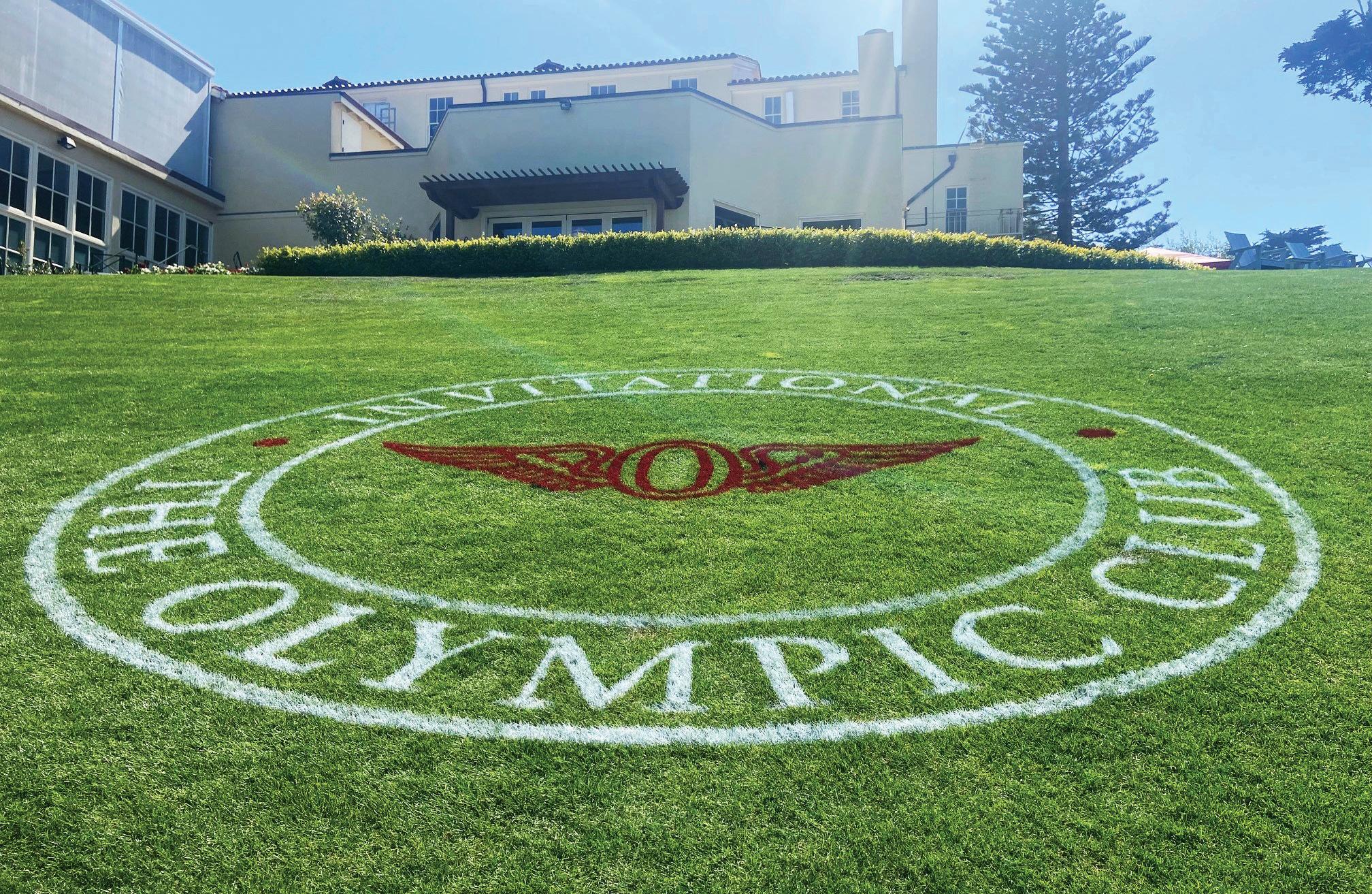
tice range. If we want the game to grow, we cannot assume people always have four hours to give us.”
Inside the shop, Jordan keeps merchandise fresh by rotating displays weekly and creating limited runs of custom items. “I love headcovers,” he admits. “We design a pattern, sell it through, and then move on to the next one. Members come in asking when the next version will
arrive, and that excitement drives sales.”
Whether it is a renovation, a tournament, or a Tuesday afternoon on the range, Jordan frames his work through a simple philosophy.
“Members come to the club to escape,” he says. “Our job is to make every detail remind them that we are here to take care of them and to create something special.” C+RB
A Generational Upgrade at St. Clair CC
General Manager Richard LaRocca is overseeing a nine-hole renovation, refreshed clubhouse spaces, and a culture built on safety and engagement.
By Joanna DeChellis • Editorial Director
IN HIS THIRD YEAR LEADING ST. CLAIR COUNTRY CLUB (Pittsburgh, Pa.), Richard LaRocca, CCM, CCE, is overseeing a period of remarkable change. With a major nine-hole renovation underway, updated clubhouse spaces, and a long-range plan that includes everything from a new paddle hut to expanded parking, St. Clair is balancing tradition with forward-looking improvements.
Club + Resort Business (C+RB): How did your career lead you to St. Clair?
Richard LaRocca (RL): I’m in my third year here. I’ve spent my entire career in this industry—starting as a caddy, then working in operations, becoming an assistant manager, and later a GM in 1990. I’ve led clubs in Pittsburgh, Cleveland, and Orlando, but ultimately, my wife and I missed home, which for us is Youngstown, Pittsburgh, and Cleveland. When the opportunity at St. Clair came up, I was thrilled to return to the area.
C+RB: Paint a picture of the club today. RL: St. Clair was founded in 1916 and now has about 850 members, with 360 golf certificates and a waitlist for golf mem-
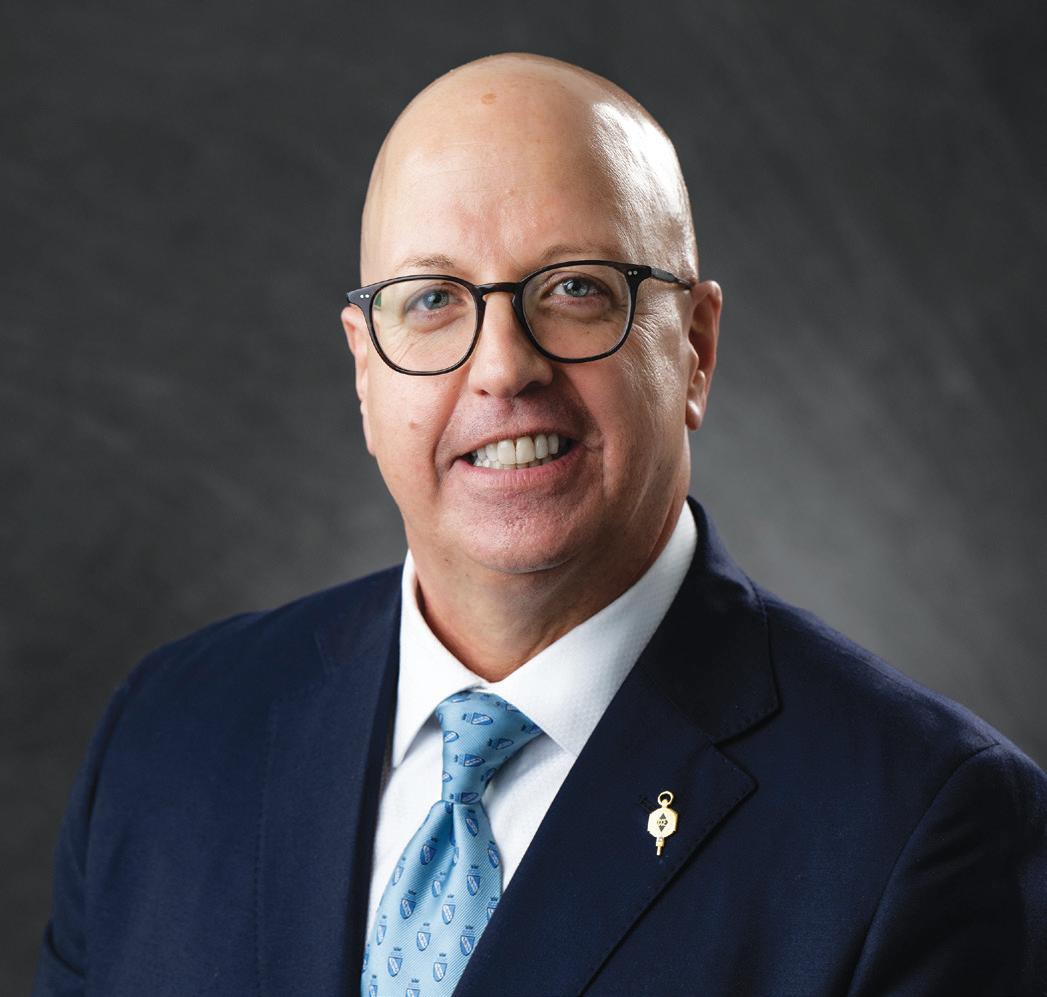
bership. We have 27 holes—18 championship and a nine-hole course currently under renovation. Beyond golf, we offer a robust social program, pool, paddle, and family-focused amenities.
C+RB: Tell us about the renovation of the nine-hole course.
RL: The terrace nine was old and tired. Our members viewed it as something to graduate from rather than enjoy on its own. We’re completely reimagining it. It will have USGA-spec greens, new irrigation, capillary concrete bunkers, cart paths, a water feature, and a state-of-theart driving range. The project is on track to open in late July or early August 2026.
C+RB: How have you managed the impact on play?
RL: We had about 32,000 rounds last year, with 8,000 on the terrace nine. We’ve shifted those rounds onto the championship 18 with careful scheduling and the understanding that everyone would feel a little bit of the squeeze. The guiding principle is that the sacrifice is worth it for a generational upgrade that will last 50 to 100 years.
C+RB: What does this renovation mean strategically?
RL: Short courses and flexible play are on-trend. Members can now come for a quick nine, work on their short game, or use our expanded practice facilities. It gives them more ways to enjoy the game, whether competitively or casually.
C+RB: What about clubhouse updates?
RL: We gutted and rebuilt the golf shop, adding better flow, merchandising, and simulator space. We refreshed the clubhouse with transitional design elements, updated the ballroom and lobby, and created a wine library featuring a painting of our seventh green. Later this fall, we’ll complete our heritage project—100 years of history displayed down our hallway.
C+RB: Membership demand is strong. How are you managing that waitlist?
RL: We currently have about 65 associates waiting for golf. The key is keeping them engaged while they wait. They have access to all other amenities—fitness, pool, dining, and social events. We aim to make the wait worthwhile by ensuring the experience is distinctive and personalized.
For St. Clair CC’s nine-hole course renovation, Dr. Michael Hurdzan is serving as architect. The updated course will have USGA-spec greens, new irrigation, capillary concrete bunkers, cart paths, a water feature, and a state-of-the-art driving range. The project is on track to open in late July or early August 2026.
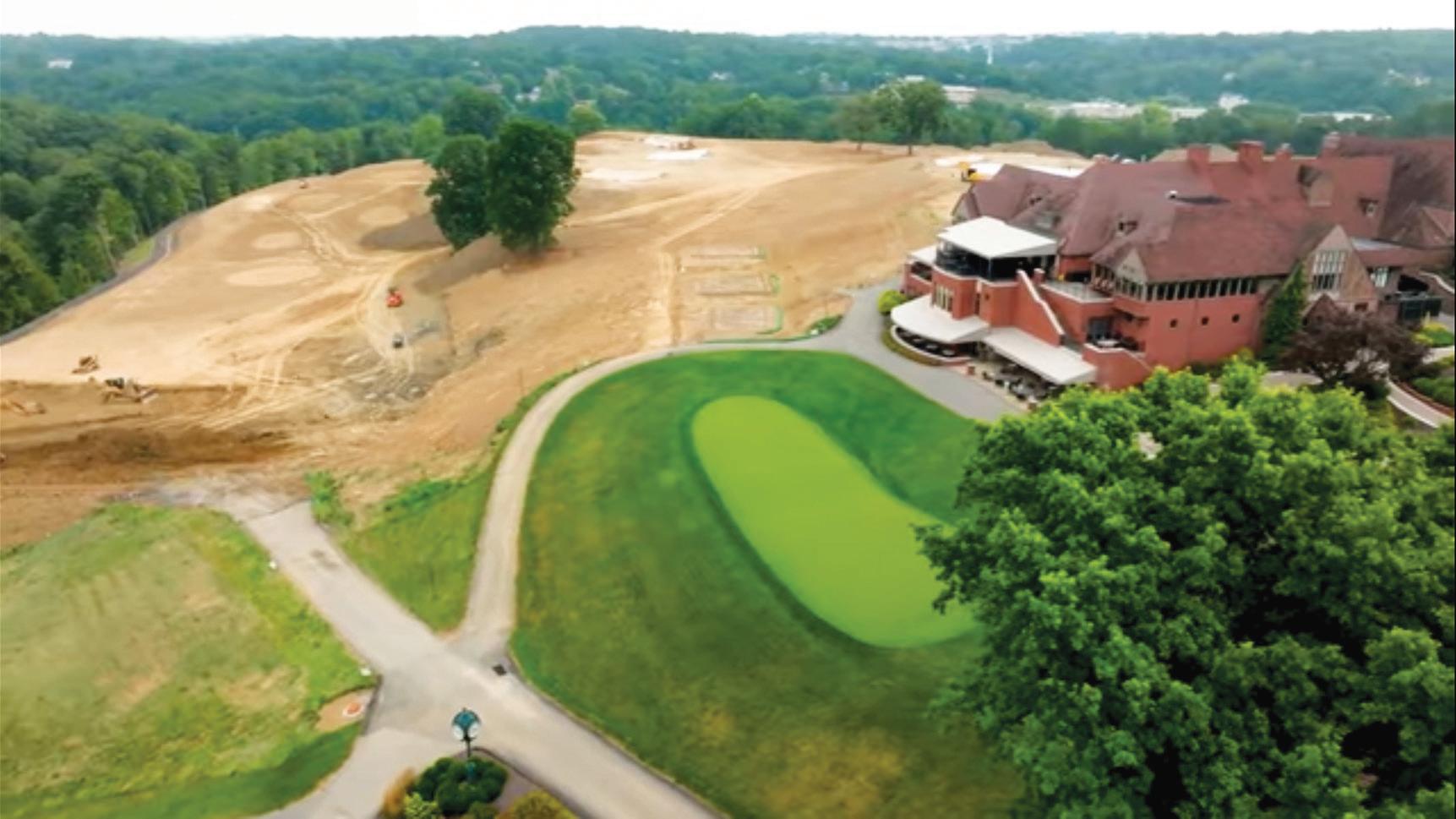
C+RB: Looking ahead, what trends are you factoring into future projects?
RL: Communication is evolving. Email isn’t always effective, so we’re exploring tools. Personalization remains critical, and we’re even weaving AI into experiences. In food and beverage, members want variety and nostalgia. They want a place that feels like their favorite steakhouse, their neighborhood bistro, and a casual terrace bar, all under one roof.
C+RB: What do you prioritize in leading your team?
RL: Safety and culture. We’ve built a strong safety program with third-party oversight, and we do an annual 365 training for the whole team on culture, safety, and club updates.
We nurture engagement with monthly cake days, summer pool parties, and constant reinforcement of kindness. That culture shows up in unexpected ways, like when our F&B team started a gratitude board on their own.
C+RB: What do you look for in new hires?
RL: Adaptability and a hospitality mindset. Whether you’re on the grounds crew or in accounting, you’re in the hospitality business here. We embrace kindness as a core value because kind people hold each other accountable and look out for one another. C+RB
except Sept. and Nov.
COMPLETE MAILING ADDRESS OF KNOWN OFFICE OF PUBLICATION
WTWH Media, 1111 Superior Ave, Suite 1120, Cleveland, OH 44114
COMPLETE MAILING ADDRESS OF PUBLISHER’S HEADQUARTERS
WTWH Media, 1111 Superior Ave, Suite 1120, Cleveland, OH 44114
FULL NAMES AND COMPLETE MAILING ADDRESSES OF PUBLISHER, EDITOR, AND MANAGING EDITOR
PUBLISHER: Matt Waddell, WTWH Media, 1111 Superior Ave, Suite 1120, Cleveland, OH 44114
EDITOR: Joanna DeChellis, WTWH Media, 1111 Superior Ave, Suite 1120, Cleveland, OH 44114
MANAGING EDITOR: Isabelle Gustafson, WTWH Media, 1111 Superior Ave, Suite 1120, Cleveland, OH 44114
OWNER COMPLETE MAILING ADDRESS
WTWH Media, LLC, 1111 Superior Ave, Suite 1120, Cleveland, OH 44114 Mountaingate Capital, 1225 17th St, Suite 2575, Denver, CO 80202
KNOWN BONDHOLDERS, MORTGAGEES, AND OTHER SECURITY HOLDERS OWNING OR HOLDING
OF TOTAL AMOUNT OF BONDS, MORTGAGES, OR OTHER SECURITIES
None
MULTIPLE DAMAGES AND CIVIL PENALTIES).
Ken Gradman (signed), CFO Filed on: 09/19/2025
What are you doing in club culinary to align with a culture of health and wellness? How do you see this evolving in the coming years?
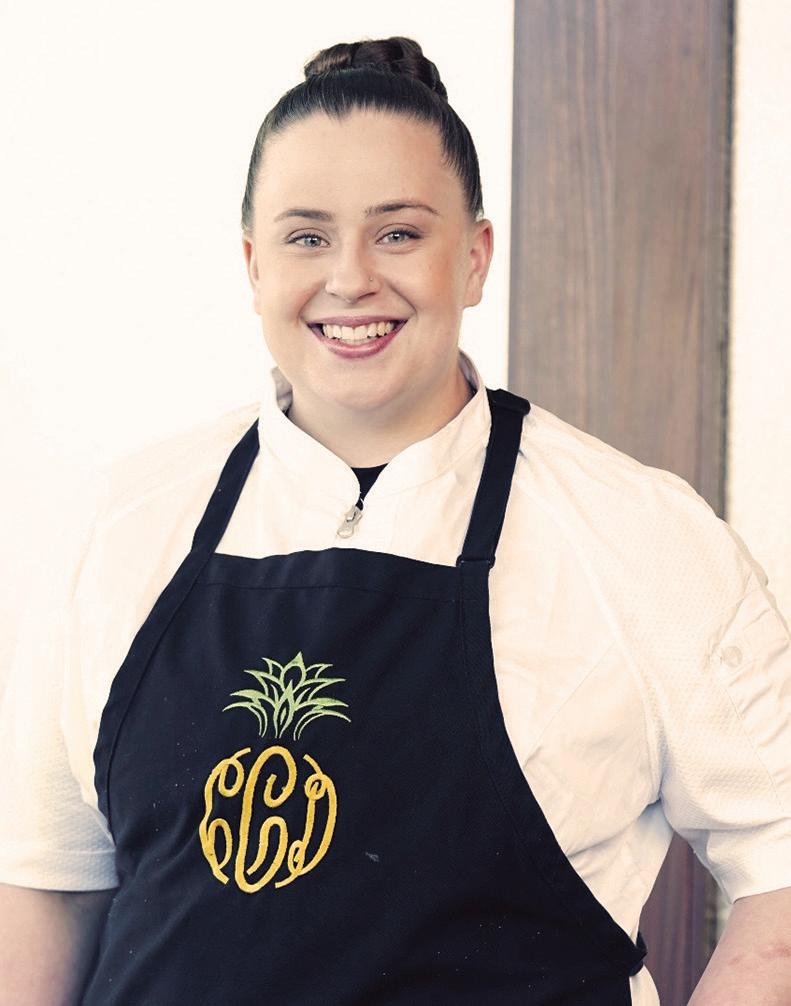
“At Bonnie Briar, we’ve made it a priority to align our F&B program with a culture of health and wellness by thoughtfully expanding our menus to include a wide variety of nutritious and inclusive options. We take every member into consideration when creating our menus, offering balanced entrées to plant-based dishes—even a vegan steak option—so there’s something for every lifestyle and dietary need.
In the coming years, we see this focus continuing to evolve. It is up to us as chefs to keep up and challenge ourselves and our teams with new and exciting fresh, seasonal ingredients and creative plant-based proteins while delivering high-end service for our membership.”
“Our philosophy in the kitchen is rooted in simplicity: Start with the very best ingredients and let them speak for themselves. By sourcing only the finest seasonal products and applying proven, thoughtful techniques, we create food that not only tastes exceptional but also supports the health and wellness of our membership.
We are truly lucky to be surrounded by so many incredibly passionate and talented farmers. I think continuing to support farms like these is the way of the future for the betterment of the membership. Our purchasing power is our voice to create consciousness of healthy and sustainable eating practices. It’s our responsibility as industry professionals to all do our part and help lead the way of positive change. Teaching the next generation to care for the products we have today is the only way to ensure that there will be a healthier tomorrow.”
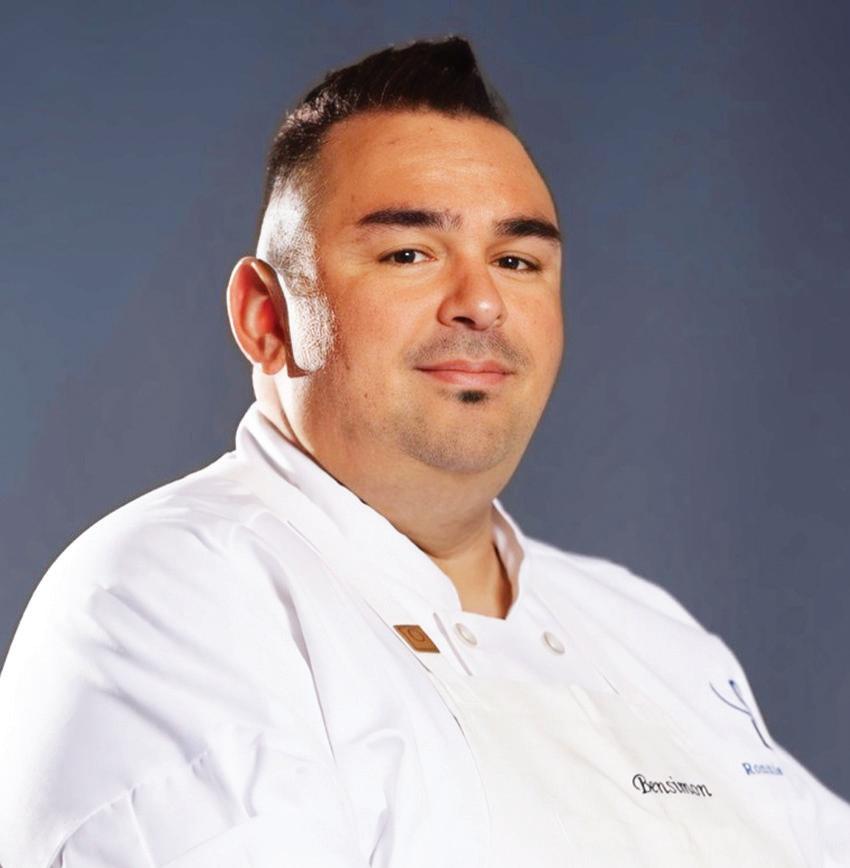

“At Broken Sound, our F&B program is aligned with wellness by giving our members balanced clean proteins, plant-forward dishes, and the freshest produce possible. At Zest, the restaurant I lead, we’ve introduced healthier items like our vegan honey sesame ‘short rib’ bao bun, using a fermented beet product to recreate that meaty texture in a fully plant-based way. Looking ahead, I see us evolving into more personalized wellness dining, breaking down macros, and tailoring to lifestyle goals, all while keeping creativity and excitement at the core.”
CATHERINE DIQUINZIO I CHEF DE CUISINE I BONNIE BRIAR COUNTRY CLUB I LARCHMONT, N.Y.
RONNIE BENSIMON I EXECUTIVE SOUS CHEF I BROKEN SOUND CLUB I BOCA RATON, FLA.
JUAN CARLOS LANDAZURI I EXECUTIVE CHEF I BEDFORD GOLF AND TENNIS CLUB I BEDFORD, N.Y.





